LEGACY



At 3J Farms OK, the Hernandez family constantly learns and adapts while managing multiple regenerative enterprises.

It All Starts with Context
A clear, comprehensive look at your ranch is where good planning begins.
Stewardship that Pays Hunting and other wildlife enterprises can add to ranch profits.
Is Virtual Fencing Right for Your Ranch? Pros and cons of using the high-tech alternative to traditional fencing.
Noble’s educational courses for land stewardship and ranch management provide proven techniques for more profitable grazing operations and healthier, more productive land. No matter the size, location or scope of your operation, Noble’s education and consultation services focus on honing your strengths and bolstering areas where you need support.
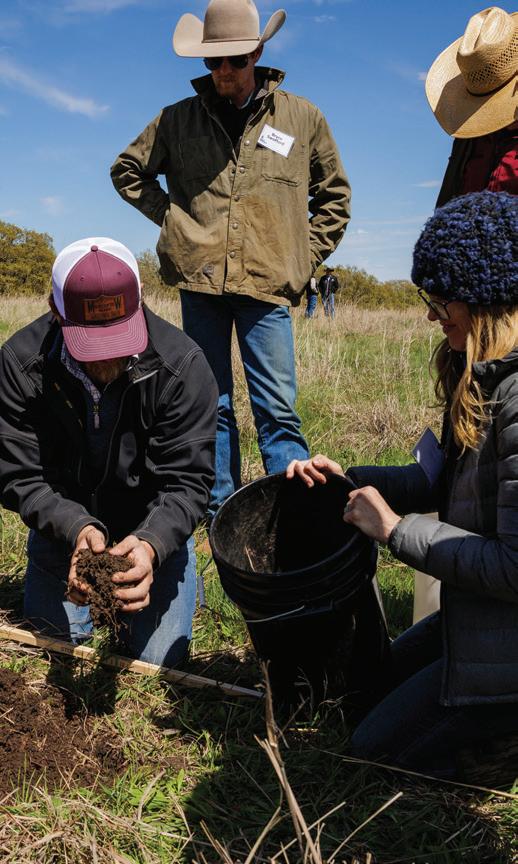
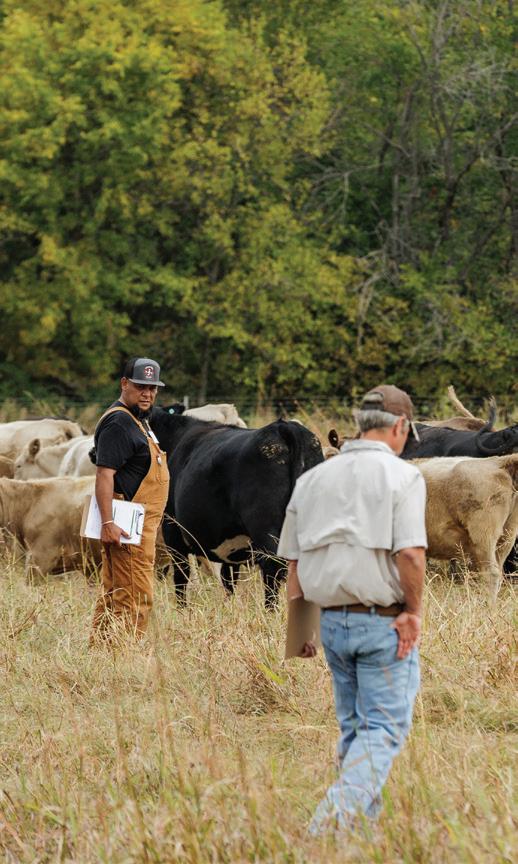
2-Day, In-Person Workshop Now Also Available Online
Healthy land means a healthy bottom line. This course emphasizes cost-cutting measures through the six principles of soil health, reducing the need for expensive inputs like fertilizers and pesticides. You’ll also learn how to measure the impact of your management practices, ensuring you’re making data-driven decisions to improve both your land and profitability.


Visit www.noble.org/find-a-course to learn more.
2-Day, In-Person Workshop
Financial success is about more than just increasing revenue; it’s about strategic planning and eliminating inefficiencies. This course gives you the tools to create profit and loss statements, cash flow budgets, and identify deadwood in your operation — allowing you to make informed financial decisions that boost profitability across your enterprises.
3-Day, In-Person Workshop
Grazing management is at the core of a profitable, thriving ranch. This course equips you with the knowledge to maximize forage production, prevent overgrazing, and build grazing plans that adjust to the needs of your land and animals. You’ll see firsthand how adaptive grazing can help you increase your ranch’s productivity while ensuring its long-term health.
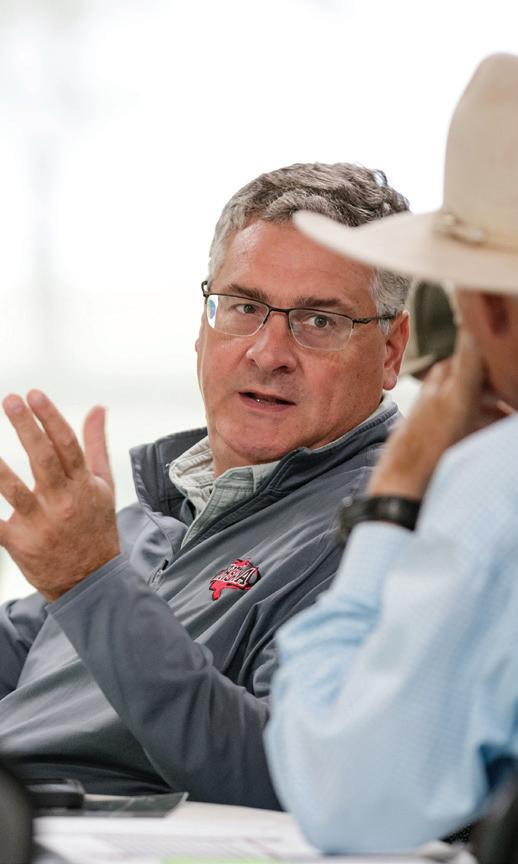
3-Day, In-Person Workshop
Infrastructure upgrades and adaptable grazing schedules are key to keeping your operation running smoothly, even in the face of market and environmental fluctuations. This course helps you align your day-to-day grazing practices with long-term ranch goals, choose the right infrastructure investments, and build flexible grazing plans that can adapt to changing conditions.
ACROSS THE RANCHING LANDSCAPE, hunting enterprises are proving their value in profitability, sustainability and meaningful land stewardship.
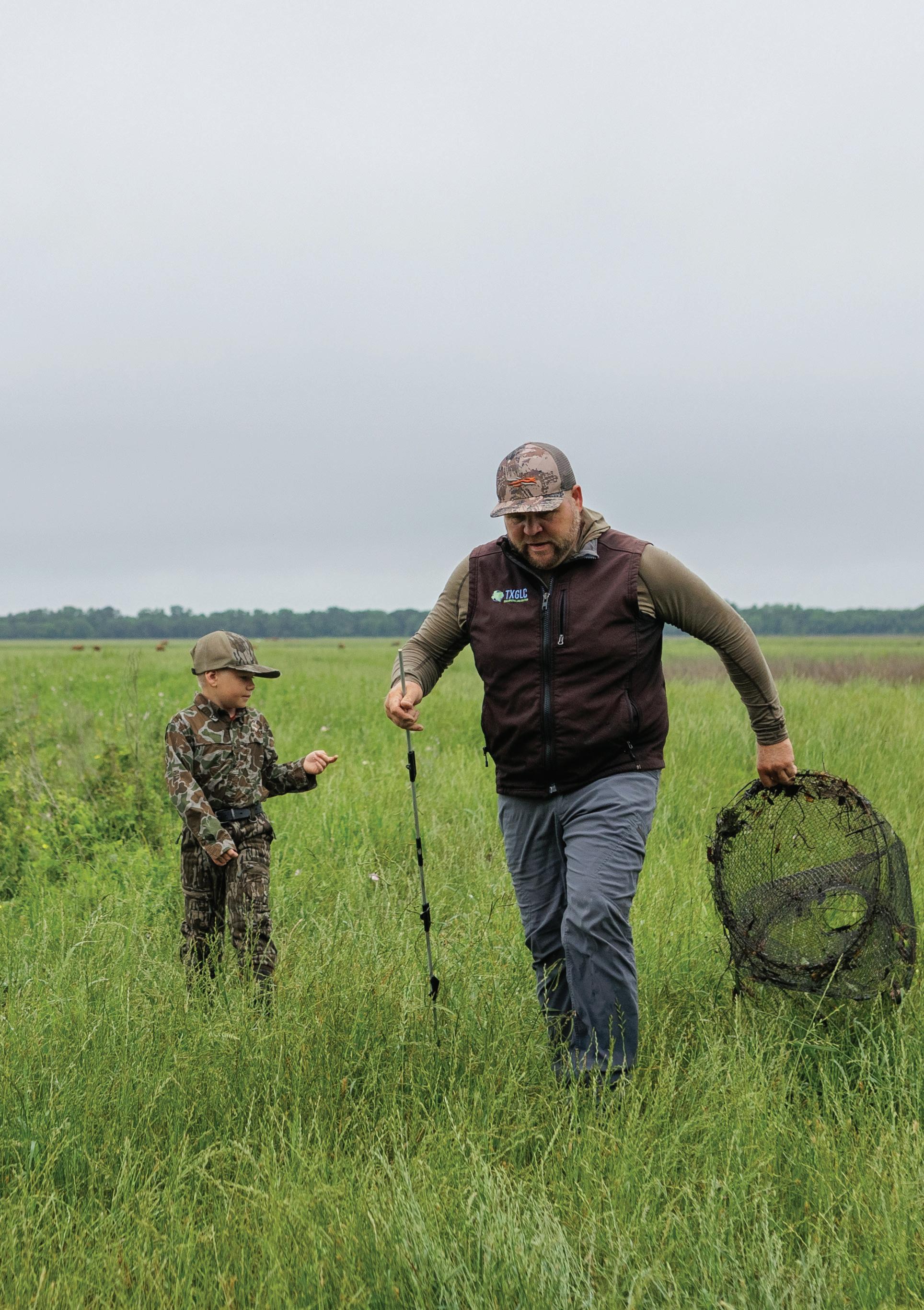
COLLABORATING TO FIND BETTER SOLUTIONS
Andy Popp keeps saying "yes" to field research projects, for the benefit of all. IT ALL STARTS WITH CONTEXT
Why understanding your ranch's full story is the foundation of successful management.
ON THE LAND
From grass-fed-and-finished beef to greenhouses, the many enterprises on 3J Farms OK keep Jennifer and Luis Hernandez looking for educational steppingstones.
What to know before buying into virtual fencing as an alternative to traditional permanent or temporary fencing. 14 20 26 40
IS VIRTUAL FENCING RIGHT FOR YOUR RANCH?
Trail cameras on Noble Ranches track wildlife in partnership with the Smithsonian's Snapshot USA project.
We revisit our roots as Noble Research Institute prepares to celebrate our 80th anniversary this fall. 4 1 0 44 48 44

Noble announces new Flint Hills educational program and fall course list. News and social media items include ways to support pollinators and dung beetles.
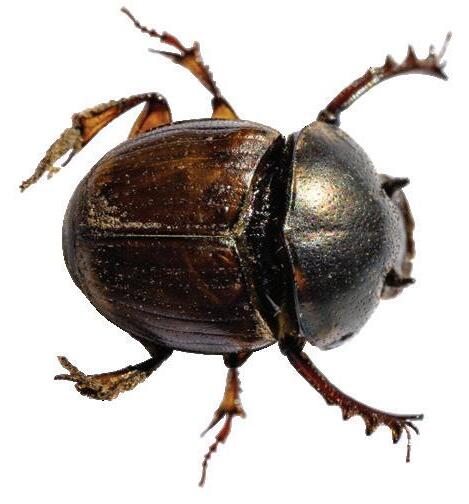
Grill up Jesse's Firecracker Burgers and read tips on how to write and use your grazing management plan.


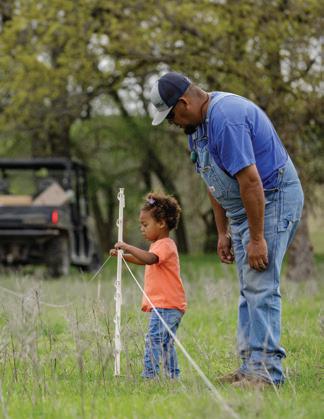

➤ ON THE COVER Jada, age 2, helps her grandfather, Luis Hernandez, hook polywire onto a post to make a fresh grazing paddock for cattle on 3J Farms OK, Blanchard, Oklahoma.
STEVE RHINES PRESIDENT/CEO
RACHAEL DAVIS EDITOR
CADIE RAMOS GRAPHIC DESIGNER
ROB MATTSON PHOTOGRAPHER
MADDY BEZNER WRITER
LAURA BRENNER WRITER
MARILYN CUMMINS WRITER/COPY EDITOR
AMIE STEARNS WEB DESIGNER
CONTRIBUTING WRITERS
Josh Gaskamp
Elisa Jackson
Burt Rutherford
Noble Research Institute is the nation’s largest nonprofit serving farmers and ranchers with research, education and mentorship for regenerating soil health to improve their land, livestock and livelihood. Since 1945, Noble Research Institute has been a leading, trusted resource in agricultural research and education dedicated to land stewardship. Demonstrating our ongoing commitment to regenerating our nation’s grazing lands, Noble actively manages 13,500 acres of working ranchlands to provide real-world insights and applications for farmers and ranchers. To learn more about Noble Research Institute, visit www.noble.org.
Reprint requests may be made by contacting Rachael Davis, editor, by email at rwdavis@ noble.org
Legacy is provided at no cost to the general public as a courtesy of Noble Research Institute. To receive a copy of the magazine or to change your mailing address, please email tlcumbie@ noble.org
Noble Research Institute, LLC
2510 Sam Noble Parkway Ardmore, Oklahoma 73401 580-223-5810
ISSN: 1939-5035
These summer weeks always seem to fly by — July and August disappearing in a blur of long days and even longer to-do lists. It’s easy to get caught up in the daily work and lose sight of the bigger picture. That’s why I like to pause around this time each year — to reflect, recalibrate and refocus for the second half.

At Noble, we make it a point to regularly check in on our long-term goals with our staff, board and producer advisors. It’s how we stay grounded. Our daily work only matters if it’s moving us toward our larger mission — helping 84,000 ranchers and farmers transition 164 million acres of grazing land to regenerative management. This year, we set out to make meaningful progress on a few big fronts: expanding and improving our educational offerings, deepening our research and optimizing our ranches.
One of our key 2025 benchmarks is creating several new educational programs for livestock producers and launching a new curriculum that supports regenerative orchard growers. We’re also bringing Noble’s education to new ground — states like California, Oregon, Georgia, Florida and North Dakota — where we’ll work closely with those ranchers to find solutions to their unique challenges. Each new producer who participates in one of our educational programs represents a ripple effect of change — more acres under regenerative management and more communities building resilience from the ground up.
To track real progress, we’re developing tools to collect producer feedback and conducting research to measure the impact of applying the six principles of soil health on grazing lands, because if we don’t know what’s working, we can’t improve. That’s why our Metrics, Monitoring and Management (3M) project is so important. It’s helping us understand not just ecological outcomes, but also the effects of regenerative management on the well-being of those doing the work.
Stories like those of Jennifer and Luis Hernandez of 3J Farms OK (page 26) or Andy Popp, a key voice in the 3M project (page 14), remind us what success really looks like after the course ends and producers begin implementing regenerative management principles. These conversations help shape better courses, smarter research and more effective support for producers on the ground.
As we hit the midpoint of 2025, I’m proud of the progress we’ve made and honest about the challenges ahead. The path hasn’t always been smooth, but every time we stumble, it’s the stories of farmers, ranchers and land stewards like you that guide us back on track.
At Noble, we believe that when ranchers succeed, we all do. So, if you haven’t already, I hope you’ll take a moment this month to check in and look at your own goals. Pour a glass of iced tea, sit on the porch, and ask: Am I moving in the right direction?

Steve Rhines, president
reserved.

NOBLE RANCHES | COFFEY, OSWALT & RED RIVER RANCHES
NOBLE'S RESEARCH PARTNERSHIP with the Smithsonian's Snapshot USA project highlights how tracking wildlife populations with trail cameras informs regenerative management on Noble Ranches.
BY MADDY BEZNER
At Noble Research Institute, the integration of wildlife monitoring with regenerative ranching practices has become essential in understanding how land management impacts both the ecosystem and wildlife populations.
Since 2019, Noble has been participating in the Snapshot USA project, a national wildlife monitoring initiative in collaboration with the Smithsonian Conservation Biology Institute. Through this partnership, trail cameras have been deployed across three of Noble’s ranches to track populations of mammals like deer, coyotes, bobcats and more. By gathering data from these cameras, Noble hopes to see how regenerative practices are benefiting not only the soil and vegetation but also the wildlife that depend on the land.
Snapshot USA is a large-scale initiative involving multiple organizations working together to monitor mammal populations across the U.S. The project recruits ecologists from universities and research institutions to deploy camera traps, track wildlife distribution and analyze trends over time. One of the primary goals of this project is to evaluate the impact of land management practices on wildlife populations, particularly regenerative practices like adaptive grazing, reforestation and planting diverse forage species.
Alan Sparks, senior research associate at Noble, emphasizes the importance of this collaboration.
“We can see how land management impacts populations, whether clearing land or adjusting grazing methods,” he says.
The project’s gradual nature provides cumulative insights into long-term trends, enabling the tracking of wildlife recovery and shifts in species distribution linked to changes in land use.
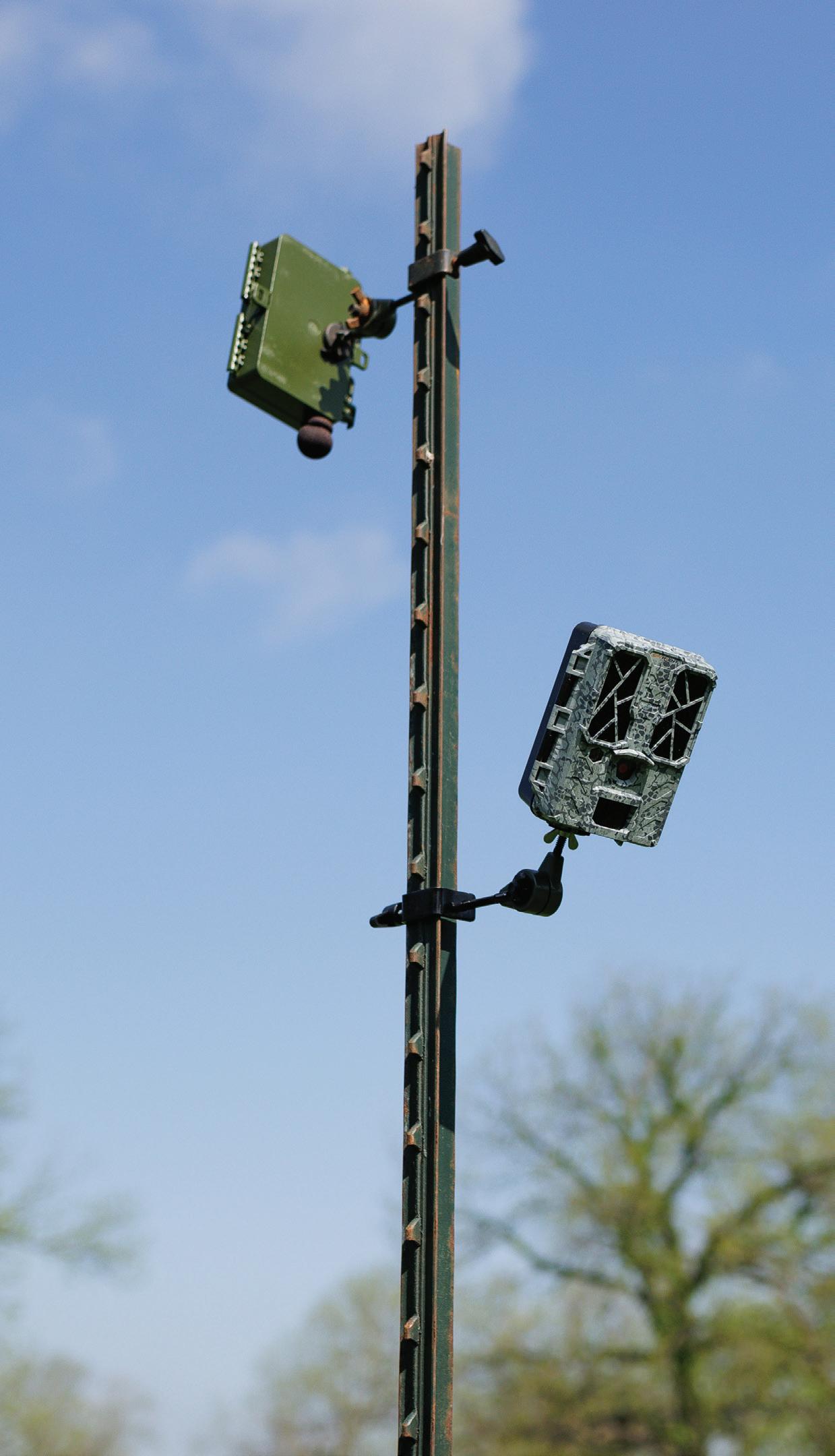
At Noble, the transition to regenerative ranching has already shown positive results. While wildlife trends take years to materialize fully, there are early signs that the shift toward regenerative management practices is benefiting wildlife. One noticeable trend is the increase in deer populations. These animals are increasingly found on the ranches, likely due to improvements in forage quality and water availability.
Sparks explains this increase in deer is significant, as healthy populations of deer are often a
LEARN MORE ABOUT THE DATA COLLECTED BY SNAPSHOT USA:



Data from trail cameras show increased wildlife detections per 100 trap nights on the three monitored Noble Ranches from 2022 to 2024. The timing coincides with Noble's changeover to regenerative management.
key indicator of thriving ecosystems, where both vegetation and wildlife are supported by sustainable land management.
Along with deer, populations of other species like coyotes, raccoons and bobcats have also shown positive growth. From 2022 to 2024, Noble has seen a steady rise in wildlife detections across its three monitored ranches — Oswalt Ranch, Coffey Ranch and Red River Ranch. The data reveals an overall increase in wildlife detections per 100 trap nights, a key metric in the Snapshot USA project that measures wildlife activity.
Once the cameras capture images, the data is uploaded to Wildlife Insights, a platform that uses artificial intelligence (AI) to help identify species in the photos. As the project progresses, the AI model becomes more accurate, refining its ability to identify animals based on the growing dataset. This technology speeds up data processing, helping researchers gain a clearer understanding of wildlife trends.
“We upload the data into Wildlife Insights, which uses AI to help identify species in the images,” Sparks says. “This platform not only helps us analyze the data, but it also improves the AI model with each new image.”
For example, the number of white-tailed deer detected per 100 trap nights increased by 18% at Oswalt Ranch. Similarly, sightings of bobcats increased by 25% at Red River Ranch, and raccoons showed a 12% increase. These trends highlight the positive effects of regenerative practices such as improved water management, increased forage diversity and the restoration of native plants.
The maps below visually represent wildlife distribution area across the ranches, with brighter colors indicating areas of higher activity. These maps allow researchers and ranchers to see how wildlife utilizes different parts of the ranches, which can inform land management decisions.
“ We upload the data into Wildlife Insights, which uses AI to help identify species in the images. This platform not only helps us analyze the data, but it also improves the AI model with each new image.”
—ALAN SPARKS
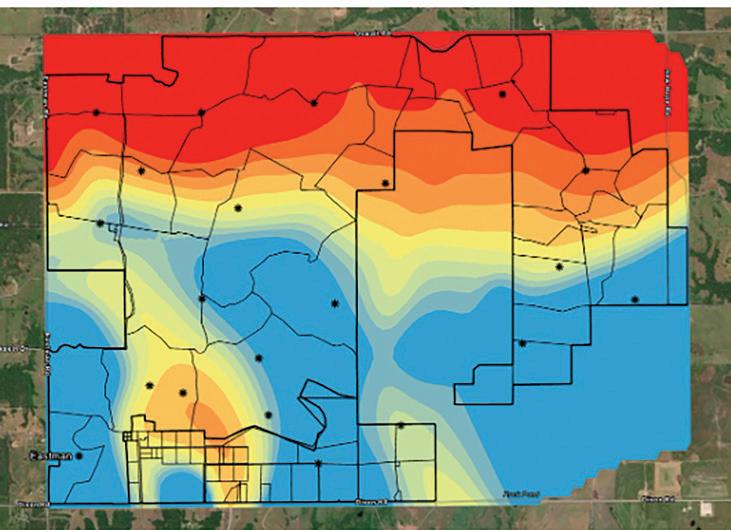



While the Snapshot USA project provides valuable insights on a national scale, the data also has practical applications for ranchers and land managers who want to track wildlife on their own operations. By installing trail cameras, ranchers can monitor wildlife populations, track biodiversity and assess how their land management practices are impacting the ecosystem. This data can help make informed decisions about grazing, water management and wildlife conservation.
Curtis Larson, the ranch manager at Noble’s Coffey Ranch, shares how trail cameras have been an effective tool for tracking wildlife and guiding land management decisions.
“We use cameras to monitor wildlife — whether it’s wild hogs, predators like coyotes, or deer that are affecting our cover crops,” Larson explains. “By understanding where wildlife is most active, we can make better decisions about grazing schedules, adjust our management practices and even reduce conflicts between humans and wildlife.”
Beyond wildlife monitoring, Larson emphasizes that trail cameras are invaluable for tracking and monitoring other key resources, such as water sources. For example, Coffey Ranch has a remote water tank that can sometimes be difficult to monitor without constant in-person checks. With a trail camera placed over the water source, Larson can remotely monitor the water levels, ensuring that his cattle always have access to water.
“Instead of having to worry about whether the cows are out of water, I put a camera over it and watch it,” he says. “If there’s a problem with the water supply, like a pump failure or low levels, I can address it right away without having to be physically present all the time.”
This use of cameras to monitor water sources is particularly valuable during the summer months, when water needs are critical. Larson also shared how cameras can help ensure the functionality of windmills and solar pumps, which might otherwise go unnoticed if a problem arises.
“When we put cows on a new pasture with a solar-powered water tank, I set up a camera there to monitor the system. If something’s wrong, I can fix it immediately before it becomes a bigger issue,” he explains.
This type of monitoring gives ranchers peace of mind and ensures that their livestock always have access to the resources they need. It also helps reduce labor time and costs associated with frequent checks on remote water sources. As Larson notes, “It’s a huge time-saver and a way to monitor without constantly being on-site.”


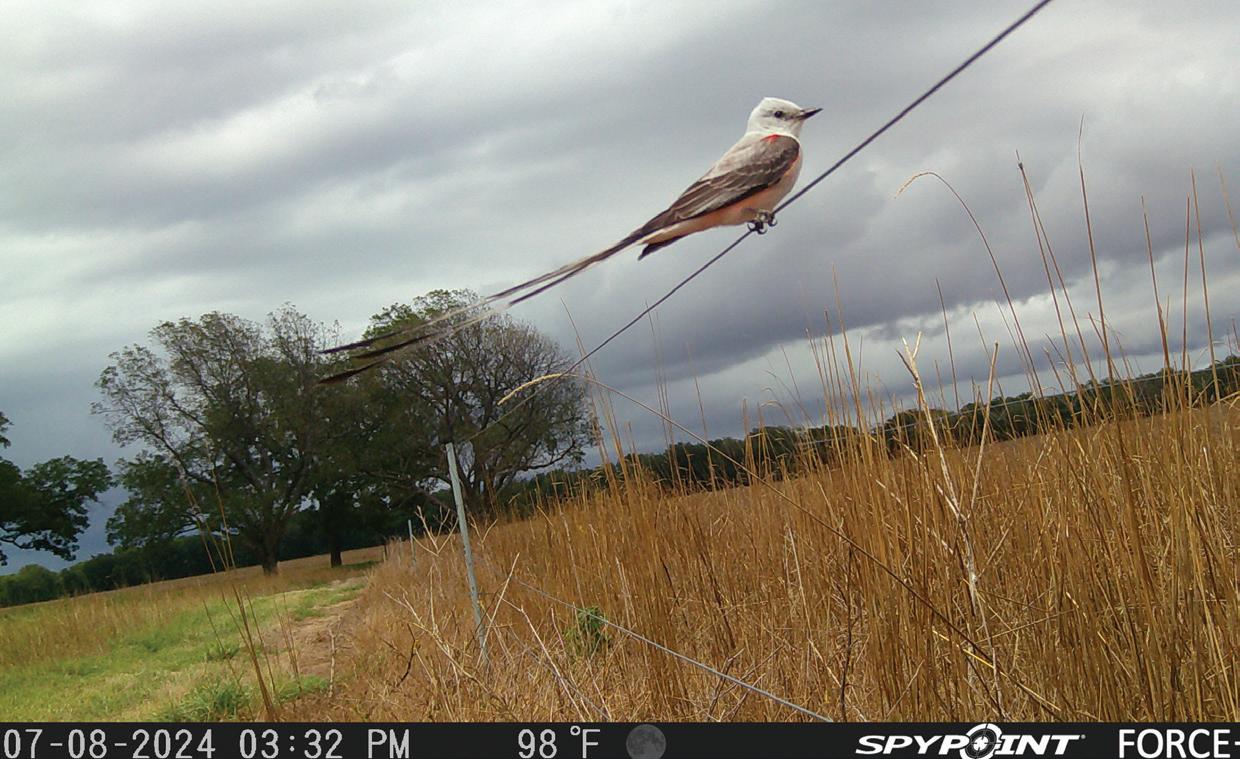

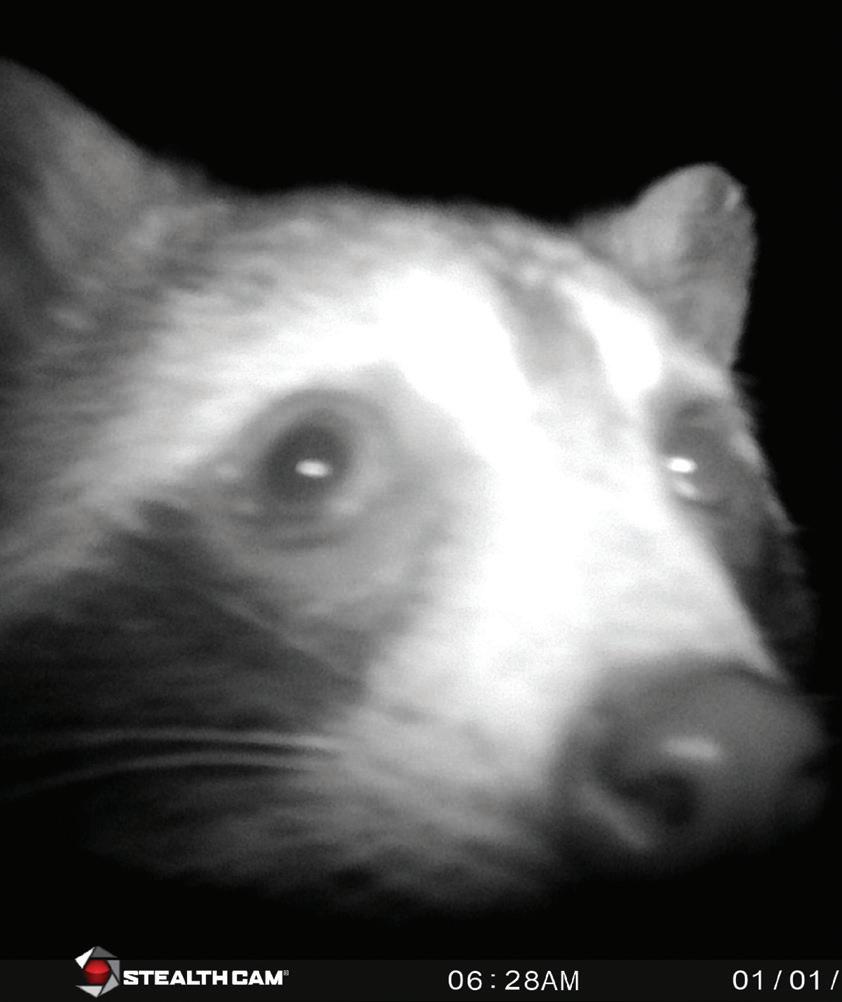
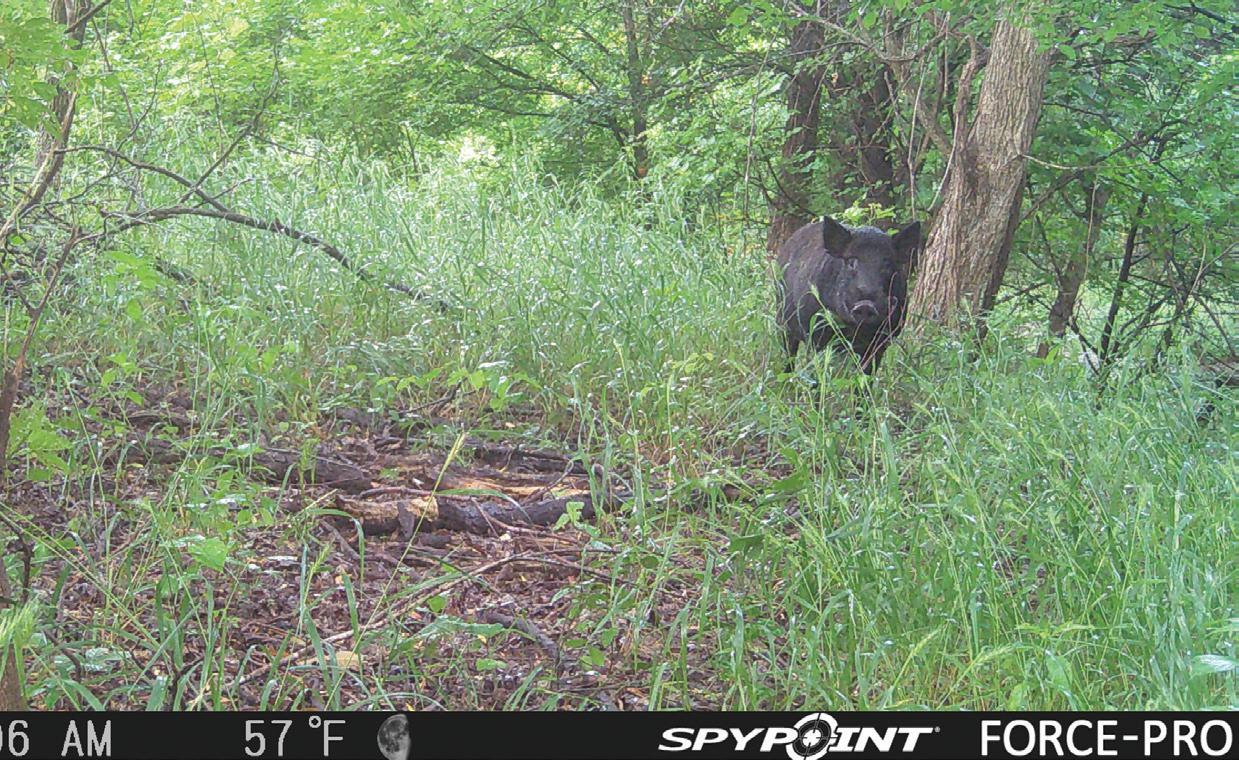

“By understanding where wildlife is most active, we can make better decisions about grazing schedules, adjust our management practices and even reduce conflicts between humans and wildlife.”
—CURTIS LARSON
For Larson, trail cameras provide more than just a tool for wildlife management — they’re an essential part of keeping all aspects of the ranch running smoothly, from livestock care to resource management. Whether it’s tracking wildlife movement or ensuring water availability, trail cameras have proven to be a versatile and invaluable tool for improving ranch operations.
As Sparks points out, wildlife changes are gradual, and it could take years to see significant trends. However, the early data suggests that regenerative management practices are improving soil health, vegetation and wildlife populations.
The gradual nature of these changes emphasizes the importance of long-term land stewardship.
“What we’re seeing is positive, and it’s exciting to know we’re contributing to a larger effort to track and protect wildlife,” he says.
The Snapshot USA project at Noble Research Institute isn’t just about tracking wildlife; it’s about understanding the interconnectedness of land management, wildlife and ecosystem health. By monitoring wildlife populations through trail cameras and analyzing the data, Noble demonstrates how regenerative management practices lead to healthier ecosystems and more abundant wildlife populations.
For ranchers, using trail cameras to monitor wildlife provides invaluable insights into the health of their land and offers a tool for sustainable land management. As more ranchers adopt regenerative principles and use technology like trail cameras, the collective impact on biodiversity will become clearer. Through its participation in Snapshot USA, Noble is contributing to a national conservation effort and providing a model for ranchers interested in integrating wildlife monitoring into their own operations. By embracing regenerative management practices and using technology to monitor wildlife, ranchers can make decisions that benefit their land and the wildlife that share it.
ADDING


➤ This bumblebee on clover belongs to one of 3,600 bee species native to North America. Focus on creating pollinator habitats wherever you are to help them all.
RANCHERS AND POLICY ADVOCATES are urging Congress to support targeted grazing as a proven, practical strategy to reduce wildfire risk and manage fuel loads on public lands across the West and Midwest.

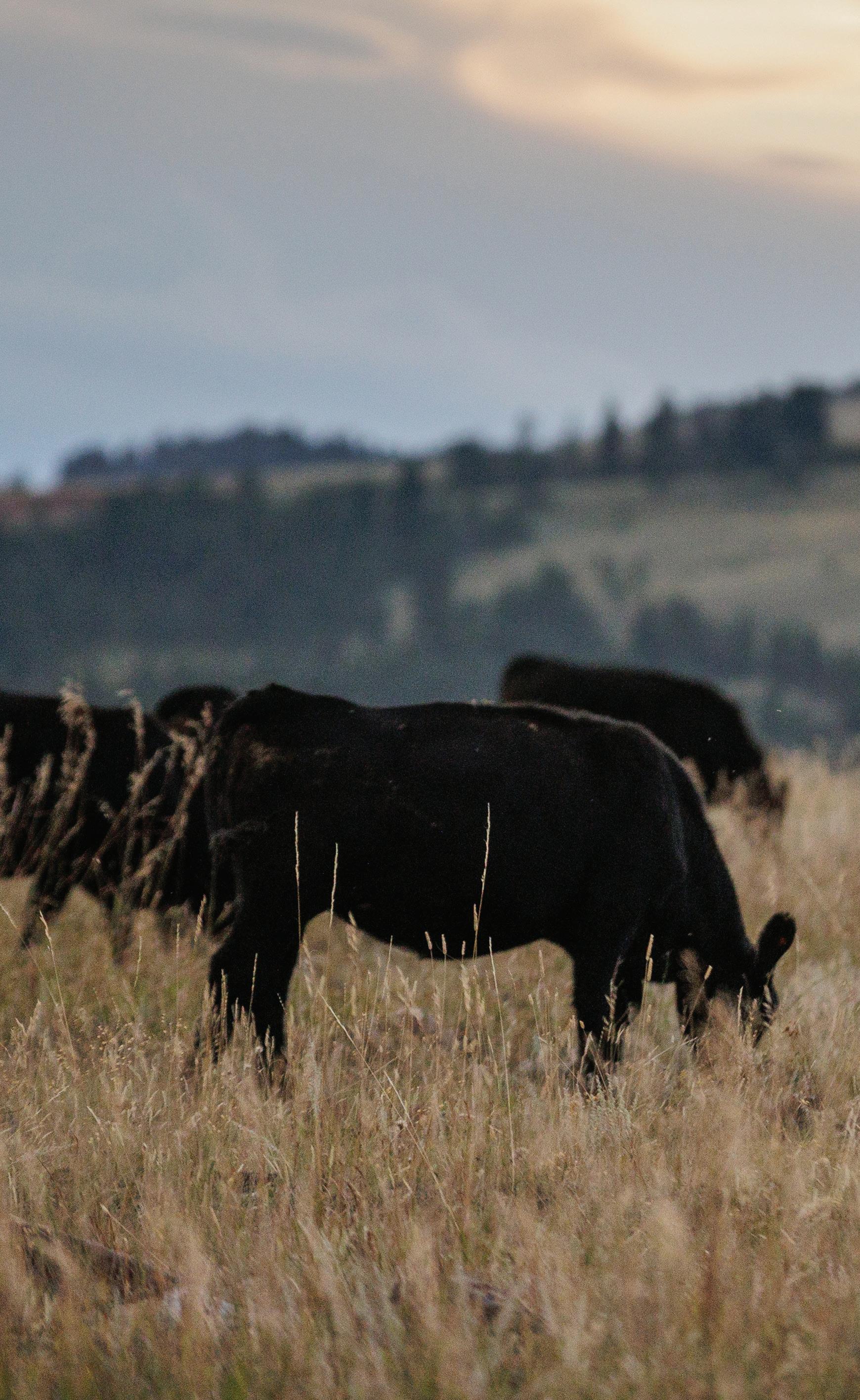

Promoting dung beetles on rangelands improves soil health, boosts forage production and reduces livestock pests. How can you best help them? With effective grazing management and careful insecticide use.

A new Dust Bowl? Without conservation programs, it could happen soon
Montana native Liz Carlisle recalls her grandmother’s stories from the Dust Bowl of the 1930s and warns against reducing or eliminating conservation programs as Congress works to reauthorize a new Farm Bill.

SOCIAL MEDIA ACCOUNTS TO FOLLOW
Get info and inspiration from what other regenerative ranchers and like-minded peers are saying.
Enjoy scenes from life on Eric Perner’s Oklahoma ranch through informative and entertaining videos and photos. Alongside raising regenerative beef for retail, Eric’s ranch is bird- and pollinator-friendly
tiktok.com/@repprovisions
Lundale Farm is a Pennsylvania non-profit that supports new and beginning farmers by leasing land to folks who subscribe to their sustainability model across a variety of enterprises. Follow their work and outreach efforts.
instagram.com/lundalefarm
ASHLEY BINGER, TIKTOK
Ashley Binger shares the good, bad and funny of working with family on her South Dakota cattle operation. Her relatable and entertaining videos shed light on the unique dynamics of a family-run ranch.
tiktok.com/@ashleybinger
George Steinmetz, photographer for National Geographic and The New York Times, shares the images he captures as he travels the world’s agricultural hubs. His “Feed the Planet” project is a multiyear effort “to photograph the challenge of meeting the ever-expanding food demands of humanity.”
instagram.com/feedtheplanet
THROUGH A PARTNERSHIP with Kansas State University and Hy-Plains Feedyard, Noble Research Institute will provide a three-year educational program designed to promote sustainable grazing practices in the Flint Hills region of Kansas and Oklahoma.


Regenerative farmer and rancher Jerry Baerg was inspired to incorporate livestock in his grain operation by what he learned at the Western Canada Conference on Soil Health and Grazing years ago. Now he makes sure cattle pass over all his land, be it pasture or cropland.

Listen to these recommended episodes on your favorite podcast app.
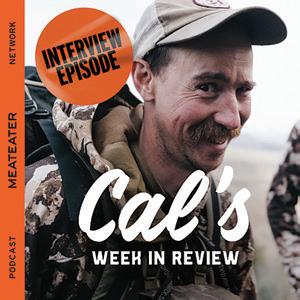
CAL OF THE WILD
E366: Why You Should Care About Rangeland, with Jeff Goodwin
Hosts Ryan “Cal” Callahan and Jordan Sillars sit down with Jeff Goodwin, director of the Center for Grazinglands and Ranch Management. They talk about what rangeland is, how it's managed and why hunters should care.
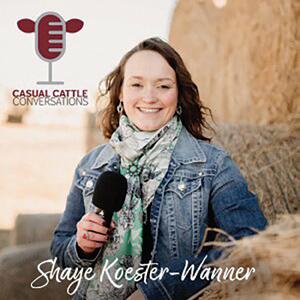
Grazing Mistakes That Could Cost You the Ranch
Host Shaye Koester-Wanner talks with Devlon Ford of Noble Research Institute about the fundamentals of grazing management, cattle management and regenerative ranching.

THE STOCKMAN GRASSFARMER PODCAST
E51: The Business of Grazing: Education for Profitability
Travis Jones from Noble Research Institute shares his expertise in agricultural education and introduces Noble's newest course, Business of Grazing.
Harness the power in your soil for better forage, better livestock and better returns.
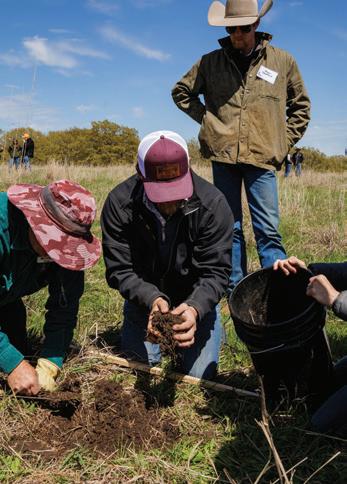
LEARN MORE:

JULY 15-16 McKenzie, ND
AUG. 6-7 Jefferson City, MO
OCT. 7-8
Ardmore, OK
NOV. 11-12
Bluffton, GA
Use your available forages to get the best out of your livestock and grazing land.
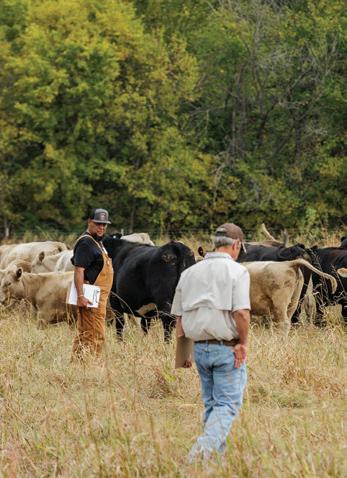
SEPT. 3-5 Ardmore, OK
OCT. 7-9
Perryville, AR
Discover how to make your grazing strategies work for your bottom line.

SEPT. 23-25 Jefferson City, MO
OCT. 14-16 Ardmore, OK
NOV. 18-20 Winter Garden, FL
Improve your business skills with financial tools to maximize your ranch's profitability.
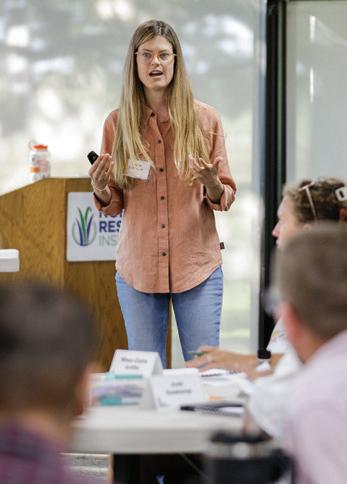
JULY 30-31
Pendleton, OR

REGENERATIVE RANCHER ANDY POPP finds multiple benefits from saying “yes” to taking part in field research projects.
BY LAURA BRENNER

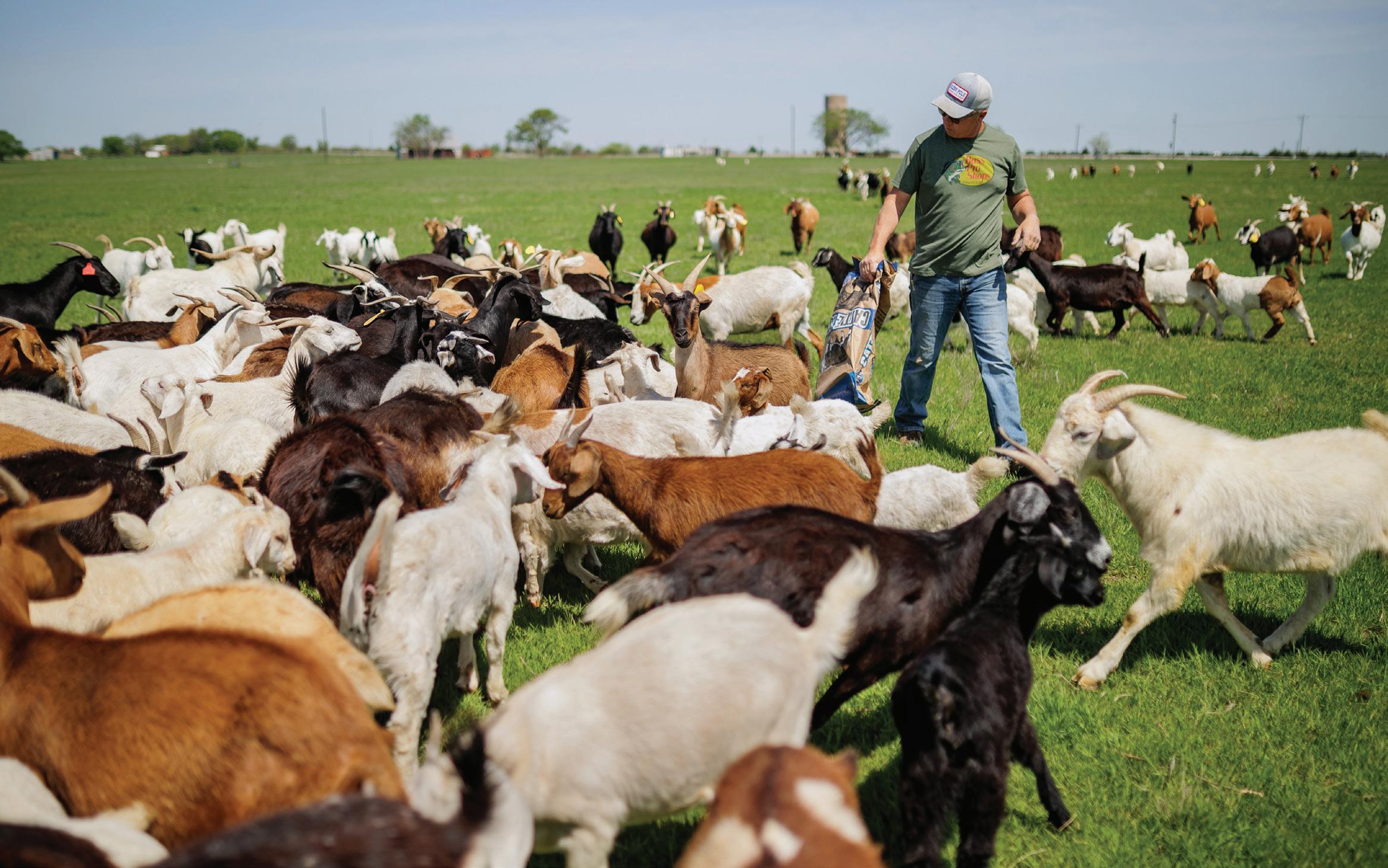
Most ranchers and farmers are wary of strange people and technology on their land, but Texas rancher Andy Popp has repeatedly opened his gates so researchers can use his land to benefit his industry.
Popp, the owner of Popp Farms at Gainesville, Texas, participates in field research as a way to learn more about his land and create value for the next generation. Popp’s journey from conventional grain farmer to regenerative agriculture advocate has been defined by a willingness to try new things and a desire to leave the land better than he found it.
Popp didn’t start out with a plan to become a regenerative land manager. He began his career helping with his family’s grain operation while working in a factory. But when the opportunity came in 2003 to lease and run the family farm full time, he took the leap.
“I still kept it as a grain operation with a few cattle,” he recalls. That changed after the death of his father and the realization that he wanted an operation he could manage solo, without seasonal labor and the grind of harvest season.
That pivot led him toward using less-conventional conservation practices that promised to reduce labor and costs. At the time, the Natural Resources Conservation Service (NRCS) offered incentive programs for farmers to incorporate no-till and cover cropping. Popp took advantage of their resources and became one of the early adopters of these conservation practices in his area, even speaking at events to share his experiences.
“ I guess you have to be wired a little differently to get enjoyment out of knowing what you're improving down in the ground versus just what's up above that everybody sees.”
—ANDY POPP
“Then I got intrigued with the regenerative side of it,” Popp says, “and decided
to tie all that together and gear more toward regenerative management.”
The appeal was more than philosophical — it was practical. Regenerative systems, he found, allowed him to spread labor out through the year and reduce dependency on expensive inputs.
As he explored regenerative management and adaptive grazing, he also saw potential in adding goats to his operation.
Where he has goats, it's helped with brush management, Popp says. “I’ve been able to reduce chemical use.”
He says he views that as more than a benefit to his bottom line, as it aligns with his philosophy of management.
“I guess you have to be wired a little differently to get enjoyment out of knowing what you're improving down in the ground versus just what's up above that everybody sees.”
While regenerative practices intrigued him, it was access to real-world data that convinced him to participate in the Metrics, Management, and Monitoring: An Investigation of Pasture and Rangeland Soil Health and Its Drivers (3M) field research project. 3M is a
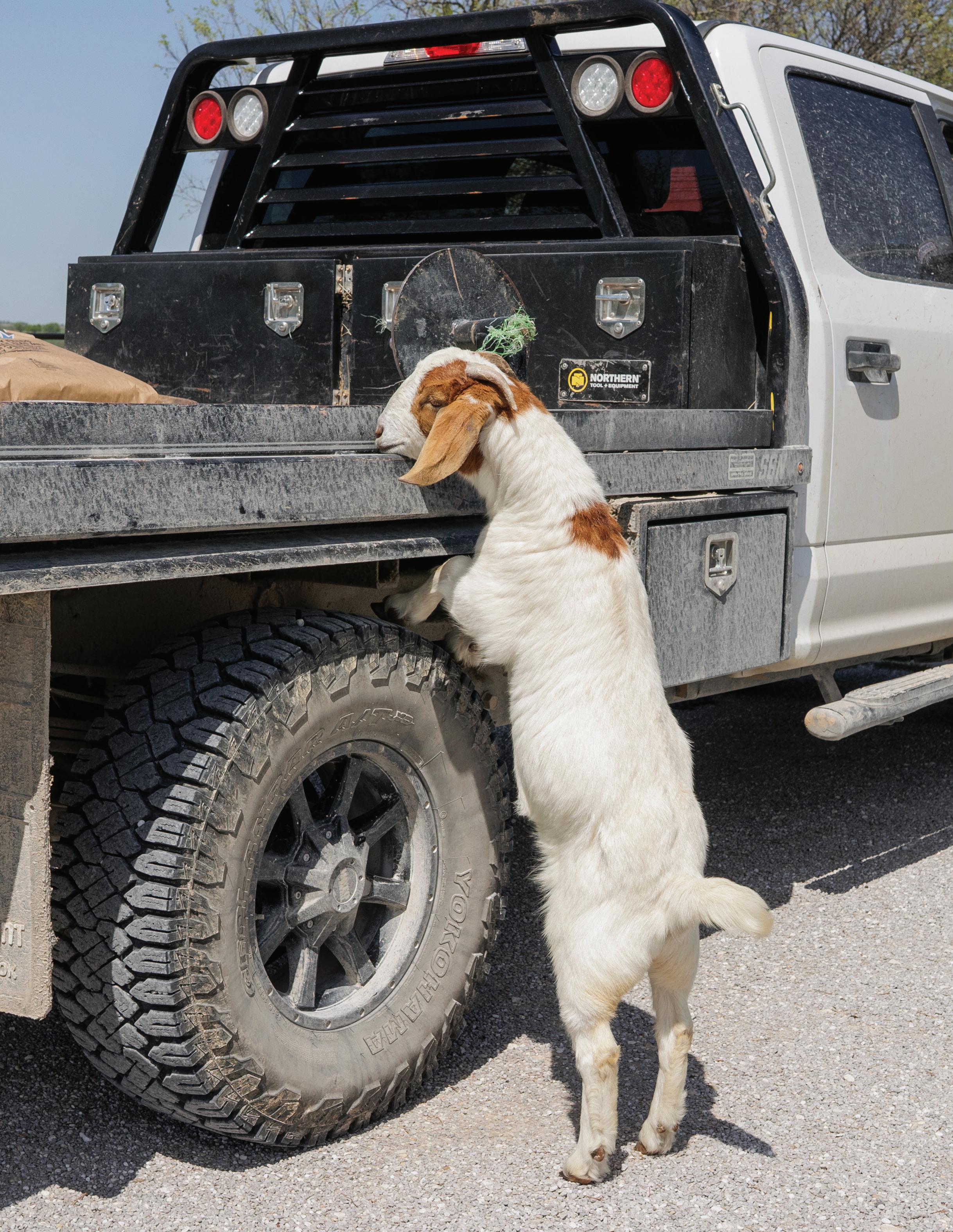

collaborative study by Noble Research Institute and other institutions exploring regenerative systems’ environmental and economic impacts.
He wanted “to get the data,” he says. “To get information to help us try to run our operation more efficiently. That was the reason I got involved.”
What makes Popp’s story compelling is his repeated willingness to host scientific equipment on his land. He’s taken part in field research projects in the past and found value in the experience. In his eyes, the 3M project couldn’t have been easier to jump into.
“It's taken no work on my part, they take care of it all," he says. “I get a notification when they're going to come, I unlock the gate, and they lock the gate behind them on the way out. Most of the time they don't even drive vehicles in there, they just walk in to repair their equipment or record data.”
The minimally invasive research setup on Popp Farms includes soil and water probes, a solar-powered weather monitoring tower and several remote sensors across the farm.
Popp is quick to point out that field research like this doesn’t serve only researchers or individual landowners — it has ripple effects across the industry.
“Every producer changes according to different data they read and hear about,” he says. “So somewhere, somebody has to (provide the land base) in order to get that data for all of us to improve our operations.”
That sense of collective responsibility and curiosity can be challenging to convey in an industry often suspicious of change.
Being “open-minded and ranching or farming seem to contradict a lot of times,” Popp says. He laughs as he admits that being raised in a German Catholic community made him aware of just how resistant some producers can be.
Perhaps due to some local skepticism about his regenerative methods, Popp has found more success leasing land from owners outside his immediate community.
“Some don’t want to see someone doing it differently than what they’ve done for 30 years,” he says. But those willing to partner with him benefit from improved soil health, decreased chem-
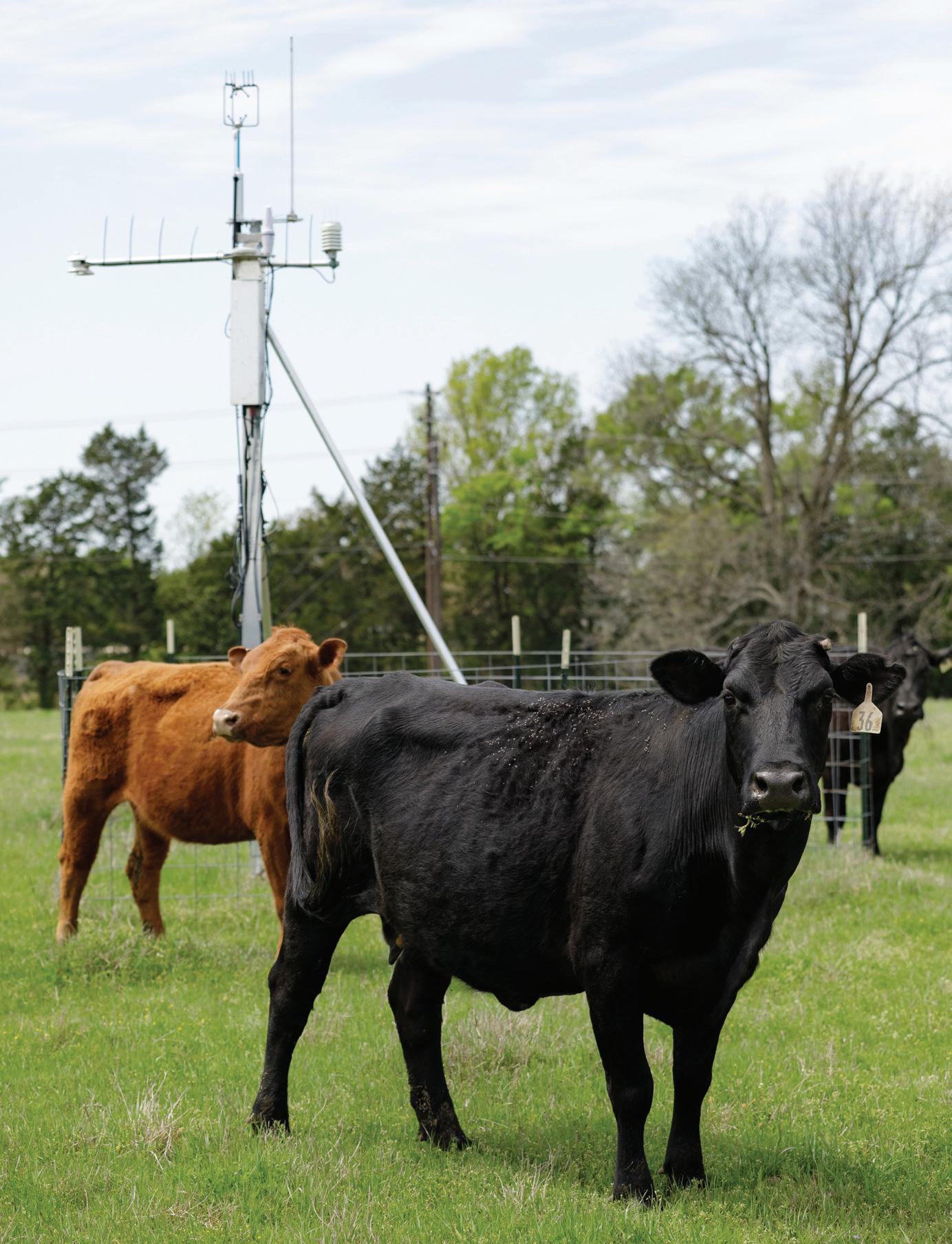
ical inputs, and even reduced wild hog activity — thanks to well-designed goat fencing.
Participating in field research is also about creating opportunities for the next generation. His son, Colton, currently studying agribusiness and finance, is interested in returning to help with the operation. Popp is intentional about passing on the knowledge he’s gained — sending soil updates, financial screenshots and management notes to Colton to keep the learning going.
“I don’t want him to feel he has to do this,” he says. “But if he chooses to, that would be great.”
There’s also a quiet humility in Popp’s approach. He doesn’t see himself as a trailblazer, even if he is.
“I just kind of stay open-minded and deal with the info after I get it,” he says. “There’s usually something
Cattle on Popp Farms in front of a flux tower that constantly measures and analyzes the ecosystem's "breath" — gases and energy exchanged between soil, vegetation and air.
in there you can use to help improve your operation.”
In his first year with the 3M project, he’s embraced new experiences like being interviewed for the well-being component of the research — something he says is rare in agriculture.
“At first I thought it was odd,” he says. “But then I thought, it makes a lot of sense. Somebody actually cares about the mental health of farmers and ranchers.”
Participating in field research isn’t as daunting as it might seem, Popp says, and he finds the benefits, both personal and industry-wide, worth it.
“It also doesn't hurt that they pay you for your time,” he says.
Andy Popp isn’t chasing fads or trends or trying to prove a point. He’s chasing answers. By staying open-minded and questioning the conventional, he’s shaping the future of agriculture — not just for his family, but for the soil, the science and the next generation of producers who will inherit the land.


WHY UNDERSTANDING your ranch's full story is the foundation of successful management.
BY MADDY BEZNER
alk onto any ranch today, and you’ll find a landscape shaped by decisions made over decades — sometimes multiple generations. Yet for many ranchers, the day-to-day hustle leaves little time to step back and ask the bigger questions: Is what we’re doing still aligned with what the land needs? Is it aligned with what we want for the future?
That’s where the principle of context comes in. Before applying a grazing technique, before adjusting herd genetics, before chasing new markets, successful ranchers first take the time to understand their full context: their land, their animals, their resources and their goals.
"Knowing your context is the first soil health principle, and it’s the one that makes all the others make sense," says Joe Pokay, Noble Research Institute’s general ranch manager. "If you don’t know your starting point, how can you chart a course forward?"
Understanding context may sound simple, but it’s a powerful shift that can change the trajectory of an operation — and in today’s challenging agricultural landscape, it’s more important than ever.
“ Knowing your context is the first soil health principle, and it's the one that makes all the others make sense. If you don't know your starting point, how can you chart a course forward? ”
—JOE POKAY
At its core, context means understanding the complete picture of your operation. It isn’t just about knowing your soil type or average rainfall, although those are certainly important. It’s about recognizing the historical forage base of your land, the weather patterns and risks unique to your region, and the realities of your available resources, whether that’s labor, water or capital. It also means having a clear-eyed view of the people involved — family dynamics, employee capabilities, and the personal ambitions and values that shape decisions.
"Context is a complex mix," says Josh Gaskamp, associate director of outreach and partnerships at Noble. "And if you don’t take time to write it down and think it through, you can end up managing based on habits, not reality."
Too often, Gaskamp says, ranchers allow one part of their context — usually tradition — to outweigh all the others. It’s easy to fall into the mindset of “we’ve always done it this way.” But inertia, he warns, can quietly lead an operation down a path that’s no longer profitable, sustainable or even enjoyable.
Taking time to define and understand your full context forces a rancher to pause, reassess, and sometimes rediscover opportunities that have been hiding in plain sight.
Today’s ranchers face challenges their predecessors never imagined. Weather patterns have grown more erratic. Mar-



ket demands are shifting faster than ever. Input costs are climbing, while available labor often feels harder to come by.
Against this backdrop, sticking rigidly to old practices without evaluating whether they still fit can be a costly mistake.
When you understand your context — when you know what your land can produce naturally, what your family hopes
to achieve and what your business truly needs to succeed — decision-making changes. It becomes more intentional, more responsive to reality rather than habit. Grazing plans shift with forage availability. Livestock selection starts to match the environment, not just the conventional wisdom. Enterprises evolve to fit the land and the people managing it, rather than forcing ill-fitting models onto fragile landscapes.
In the Cross Timbers region of the Southern Great Plains, where Noble Ranches are located, the landscape itself offers a perfect example of how important context can be. Here, ranchers deal with a challenging transition zone between woodland and prairie, where aggressive brush encroachment threatens grassland health.
Some try to control the brush with herbicides or mechanical clearing, often at great expense and with varying success. Others, learning from their ecological context, have turned to adaptive grazing as a solution, using livestock impact to manage succession and restore native grasses.
Pokay notes that techniques like high density grazing can help stimulate soil biology and reduce woody plant invasion, but they must be used thoughtfully. Another increasingly popular approach, he suggests, is introducing goats as a targeted management tool.
"Goats naturally prefer woody browse and brush, so integrating them into your grazing strategy can provide effective control while creat-
ing an additional enterprise opportunity," he explains.
Regardless of livestock choice, Pokay cautions against overly rigid grazing methods.
"Constant ultra-high density grazing can hurt animal performance if you don’t follow it with the right rest and recovery periods," he says. "The land tells you when to push and when to pull back. You just have to listen."
Rather than applying strict formulas, ranchers who work successfully within challenging ecosystems adjust their management season by season — sometimes even week by week — depending on what the forage and soil conditions dictate.
The lesson is clear: successful management isn’t about imposing a system on the land. It’s about working within the land’s natural rhythms and boundaries, guided by a deep understanding of context.
Ranchers also need to consider context when it comes to their livestock. Many ranches, especially those historically
relying on high inputs, run cattle that depend heavily on supplemental feed, fertilizers or intensive management. That dependence can become a liability in a regenerative system — or in a system simply seeking greater resilience.
“Context is a complex mix. And if you don't take time to write it down and think it through, you can end up managing based on habits, not reality.”
—JOSH GASKAMP
Pokay emphasizes the importance of matching your herd to your environment. If a cow cannot breed back or raise a calf successfully on what the land provides, she simply doesn’t fit the program, no matter how good her genetics might look on paper.

"It’s not about blaming the cow," he says. "It’s about aligning your herd with your environment. We want cattle that thrive on the resources naturally available to us, not animals that need to be propped up by constant intervention."
Sometimes, this means evaluating whether adding stocker cattle, or even transitioning entirely to a stocker operation, could be a better match for available resources than a cow/calf operation.
This philosophy, applied consistently, can reshape a ranch’s profitability and resilience over time, creating operations better equipped to handle environmental and market fluctuations without overreliance on costly external inputs.
It’s easy to focus on ecological or operational factors when thinking about context, but Gaskamp stresses that personal and business goals matter just as much — and often get overlooked.
Ranchers need to ask themselves difficult but essential questions. What kind of life do you want for yourself and your family? Do you envision a multigenerational legacy, or is your goal a thriving business that supports
your current lifestyle, regardless of who takes over? Are you seeking diversification to buffer against market shocks, or do you prefer simplicity, even if it means narrower margins?
Without clarity on these questions, ranch management decisions can drift, leading to frustration, burnout or financial strain.
Even a simple exercise — sitting down at the kitchen table and sketching out your land, personal and business contexts — can reveal hidden strengths, gaps and opportunities. Gaskamp has seen ranchers uncover new enterprises, like wildlife leases or agritourism ventures, by reevaluating what their land can offer and what they personally hope to achieve.
Often, the biggest breakthroughs come not from adding new practices, but from realigning existing ones with a clearer understanding of context.
Context isn’t a box you check once and forget about. It’s something you revisit as your land changes, your goals evolve and new opportunities emerge. It’s a living, breathing part of ranch management, just as vital as rain or sunlight.
“ When you know your context, the rest of the soil health principles fall into place.”
—JOE POKAY
At its heart, regenerative ranching isn’t about copying a list of practices from someone else's playbook. It’s about reading your own land and life and fitting your management to match.
"When you know your context, the rest of the soil health principles fall into place," Pokay says. "Regenerative management practices become natural extensions of good decision-making. They’re not something you force. They’re something that fits."
If you’re looking to build a ranch that’s profitable, resilient and aligned with your long-term vision, don’t start by asking what new practices to try. Start by asking what your context truly is — and let the answers guide the way.
Success isn’t always about doing more. It’s about knowing better where you stand.

BY JOSH GASKAMP, Associate Director of Outreach and Partnerships

UNDERSTANDING THE FULL PICTURE of your ranch — your unique context — is essential for making sound decisions and avoiding the pitfalls of one-size-fits-all solutions. Instead of mimicking what others do, apply regenerative principles that cater to things like your ranch's management history, resources, goals for the future and market opportunities.
When you're ready to get started, use this quick reference guide to help you think about your ranch's unique context.
Factors That Define Your Ranch's Context
OPERATIONAL:
• Property history (ownership, agricultural use, ecological)
• Land values and taxes
• Production goals and objectives
• Economic and financial goals
• Types of enterprises on the ranch
• Livestock genetics and epigenetics
• Infrastructure constraints (water, fencing, facilities, etc.)
• Forage base and grazing practices
• Soil health parameters
• Biodiversity
• Climate, region and environment
• Available markets
PERSONAL AND SOCIAL:
• Background, education, experience and knowledge base
• Powers of observation
• Desired quality of life
• Family and employee dynamics
• Future succession plans
• Roles and responsibilities on the ranch
• Influence of neighbors and others
• Willingness to learn and level of risk tolerance
• Belief system
• Gather infomation on ranch history, family, employees, future plans, markets, quality of life, succession plans, enterprises, management practices, livestock genetics, forage base and constraints.
• Conduct a detailed tour of the ranch to observe your land base, facilities, water resources, fencing and livestock.
• Use simple tools (e.g., shovel, water infiltration ring, soil thermometer, refractometer) to assess soil and plant health.
• Research historical ecological context to understand the land's potential.
Are you ready to find the opportunities in your operation? Take the first step to indentifying new opportunities by defining your context using your answers to these three questions:
1. Is what we're doing still aligned with what the land needs?
2. Is it aligned with what my family and I want for the future?
3. Is it aligned with what I want for my business?
You may be surprised by what you find.


JENNIFER AND LUIS HERNANDEZ are two tenacious ranchers who are serious life-long learners. The Oklahoma couple is on a mission to regenerate their land and expand their multifaceted, community-supported enterprises.
BY LAURA BRENNER
Jennifer Hernandez prepares to draw in customers at the Edmond Farmers Market with her fresh-grilled onion burgers, helped by local student Tray Battles.
IFyou visit the Edmond Farmers Market north of Oklahoma City, you’ll likely hear Jennifer Hernandez’s laugh before you see her beaming smile and bright lipstick. Jennifer and her husband, Luis, own and operate 3J Farms OK, a diversified farm in Blanchard, Oklahoma.
Retail-marketing their beef at a couple of farmers markets is just one of the ways the Hernandezes are re-shaping the story of the former dairy farm where Jennifer grew up.
As they took over managing the land, the couple discovered the principles of regenerative ranching were the right fit for their farm and sought out educational opportunities anywhere they could. At first, they had to drive hundreds of miles to attend regenerative-based field days and classroom-based workshops. In the summer of 2023, however, they discovered Noble Research Institute’s regenerative ranching courses and jumped at the chance to learn with an organization in their proverbial backyard.
Starting a family was the catalyst that began Jennifer and Luis’ journey to farming. Jennifer’s mother, who at the time still managed some beef cattle and lived on the family farm, was eager to have her grandchildren nearby, and the Hernandezes felt called back to the open space of Jennifer’s hometown.
“My mom wanted her grandbaby to be raised on the farm,” says Jennifer, who was already considering a move back to Oklahoma from the Texas panhandle. “So back to the farm we went, and we've been there ever since pretty much.”
At first, Jennifer and Luis both worked fulltime town jobs, helping Jennifer’s mother on the farm as needed. It wasn’t long, however, before Jennifer and her siblings, Jillian and Jesse Estes, were brainstorming how they could create a more sustainable farm – and living – from their family land.

Plans stopped short with the sudden death of Jennifer and Jillian’s brother, Jesse.
“That sent us into a tailspin,” recalls Jennifer of her family’s immense grief. “Death changes people, and you don't know what you're going to do, or how you’re going to do it or even how to move forward.”
It took time to heal, and eventually that terrible loss became a meaningful spark that brought forward the first iteration of 3J Farms OK.
“When my brother left us, he left behind his girlfriend, Traci, and his business partner, David. They came into our lives and never left – they brought different skills and ideas to the farm.”
Those skills brought about an idea for an on-farm business. The family sought out a way to kick-start a greenhouse business. Jennifer and Traci toured a couple of greenhouse operations and found out one of them was for sale. With the help of their team, three greenhouses were de-constructed, moved and rebuilt on 3J Farms OK land.
Greenhouses bring good seasonal revenue, but they don’t require much land. The family had to decide how they would use the remainder of their land. That’s where Luis stepped in.
“Luis has always been interested in cattle and spent time in Oklahoma doing different things with cattle, and we thought, ‘that’s going to be our farming future,’” says Jennifer.
“LUIS HAS ALWAYS BEEN INTERESTED IN CATTLE ... AND WE THOUGHT, ‘THAT'S GOING TO BE OUR FARMING FUTURE.’ ”
—JENNIFER HERNANDEZ

On-farm greenhouses were the first enterprise the Hernandezes began when they returned to the family farm. They became the lifeblood of a community hungry for connection and ways to grow their own food during the coronavirus pandemic, and they continue to delight customers.
COURSE “HELPED ME REFINE OUR HEAD COUNT, HOW MANY COWS WE'RE CARRYING AND WHAT'S GOING TO BE PROFITABLE FOR US.”
After years of using the land to dry-lot dairy cattle, the soil had become compacted, and the topsoil had washed into the flood-control lake on the farm. Luis knew he needed to know more about the best ways to restore the land using the farm’s limited resources.
When Luis started managing the cattle on 3J Farms OK, he armed himself with online resources from popular names in the regenerative space – Joel Salatin, Greg Judy and Gabe Brown, to name a few. With limited options for regenerative education close to him, Luis often traveled to other states for in-person workshops, farm tours and the like.
“We spent a lot of time going across the U.S. to look at different ranching operations and how they work,” says Jennifer. “We studied others, but a lot of times we found they don’t have the same grasses or soil that we do in our area, so some of the things aren’t exactly the same.”
Even though the bermudagrass-heavy pastures of 3J Farms OK didn’t look like some of the ones Luis toured, he was able to glean some sound management principles and practices to tweak and apply at home. Neither Jennifer
nor Luis believe they’ll ever know it all about regenerative ranching. So, when they found an opportunity to work with regenerative ranching educators at Noble just a couple hours from their farm, they didn’t waste time.
Luis attended Noble’s first-ever Noble Grazing Essentials course in the fall of 2023. The foundational course was a good refresher for Luis, who had been practicing regenerative management since 2018 on the farm.
“It helped me refine our head count, how many cows we’re carrying and what’s going to be profitable for us,” says Luis. Attending Noble Grazing Essentials and seeing a working example of the impact of grazing 1 million pounds of livestock per acre on the land inspired him to try such intense grazing at home.
“We did that at the farm this past fall, and it seems like it’s going to work out in our favor,” smiles Luis. “The things that I was scared to try before, this course gave me the confidence to try it on our place.” Luis values hands-on experience over classroom learning and emphasizes that making mistakes is part of the learning process in grazing management.
While Luis is past the five-year hurdle many regenerative practitioners say the land and manager must endure to fully realize the benefits, he enjoyed sharing his experiences with fellow course participants.

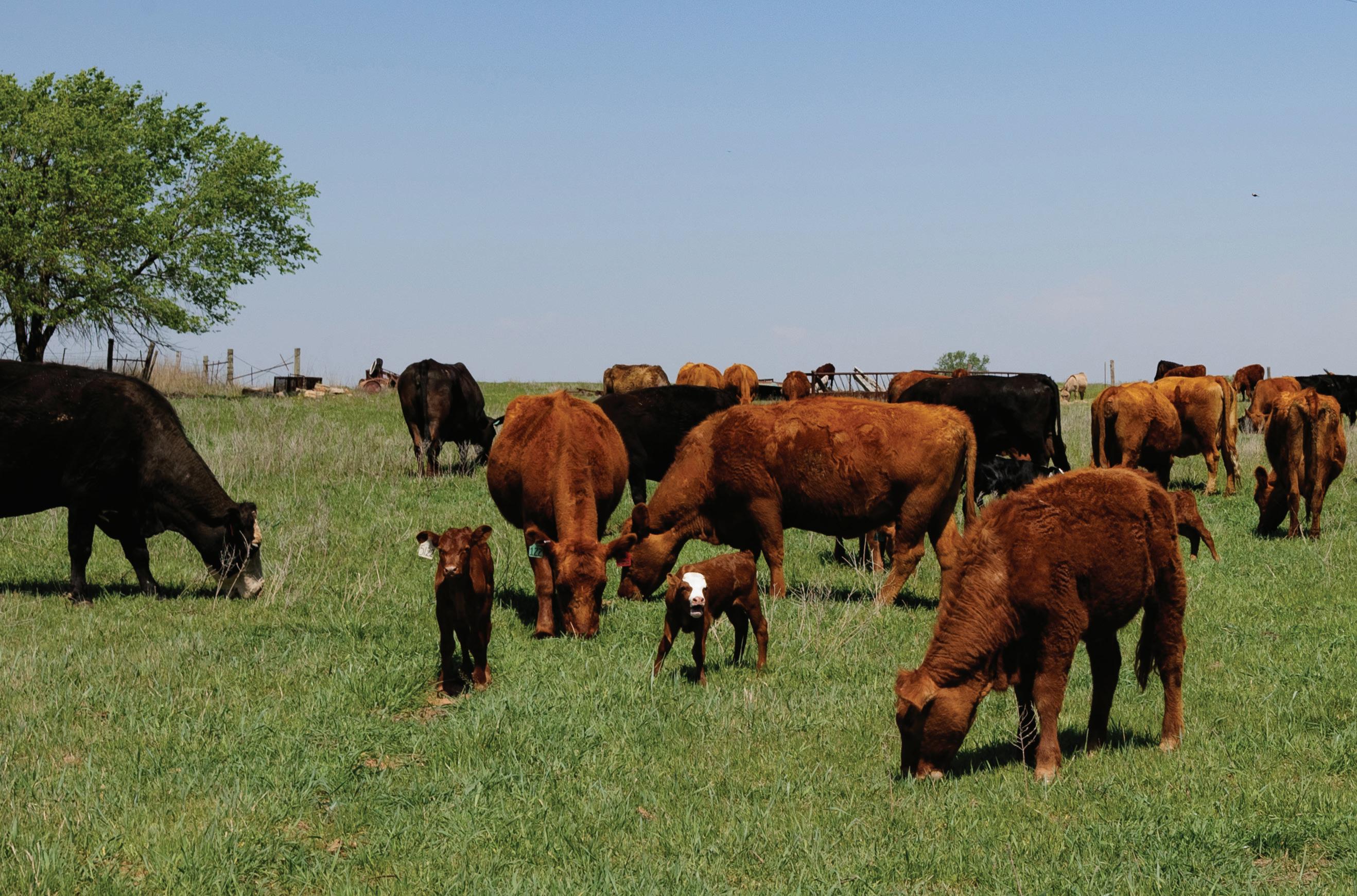
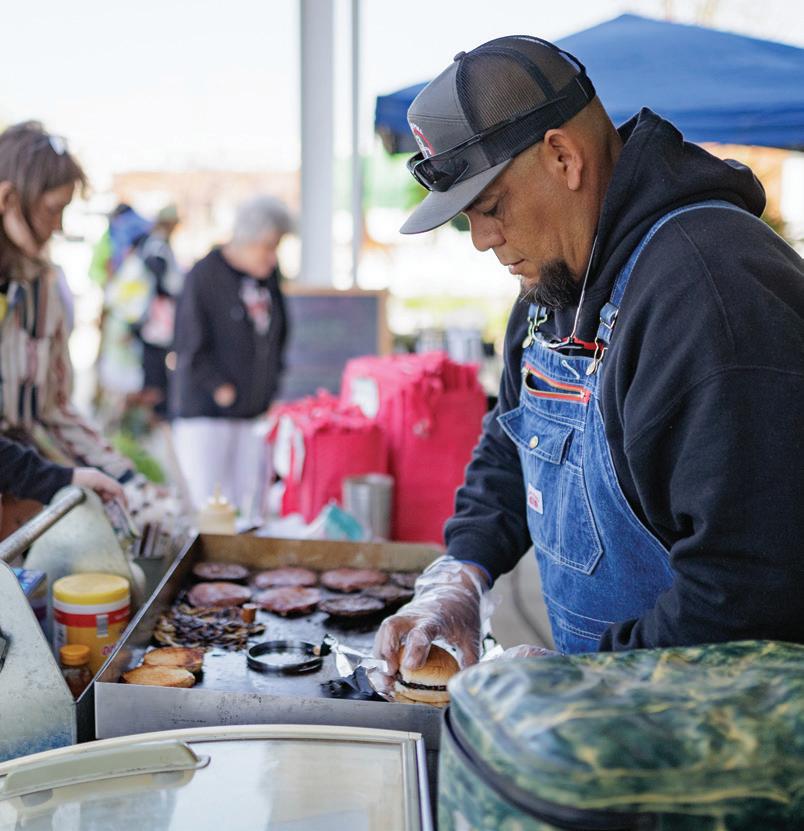

“I wish I would have written down every mistake I made, because I could write a book on it,” quips Luis.
Learning as they go has been the hallmark of all ventures on 3J Farms OK. Applying the previous day's lessons is part of what got the modern iteration of their business started during the COVID-19 pandemic and what keeps it growing today.
Jennifer attributes 3J Farms OK’s early success to their ability to pivot nimbly to what the market needed during the COVID-19 era. The greenhouses they invested in became the lifeblood of a community of people hungry for something to pass their time and the opportunity to grow their own food.
Jennifer isn’t afraid to try and fail. “If I don't feel like it's the right way, I'll turn around and go another way,” says Jennifer. “When COVID19 happened, it was a good springboard to do anything we wanted, and it was all relatively successful because folks were looking for things to do.”
3J Farms OK hosted outdoor operas, murder mystery dinners and a weekly farmers market in their oversized hay storage barn. Eventually,
[Top] A calf bawls as cattle graze the restored pastures of 3J Farms OK.
[Middle] At the Norman Farm Market at The Well in Norman, Oklahoma, Luis grills onion burgers the Hernandezes give out to draw in customers for the grass-fed-and-finished beef they sell.
[Bottom] While she has a business degree, Jennifer Hernandez credits the Noble Profitability Essentials course she took with filling in gaps that will help her operate 3J Farms OK even better in the future.

A happy calf makes use of the improvised, newly installed rotating brushes affixed to mineral feeders.
As nearly 50 cars queue up to be first at the 3J Farms OK plant sale, Jennifer Hernandez opens the gates and greets regular customers by name. The greenhouse sale is so popular the Hernandezes set up a custom traffic pattern to safely handle the high volume of traffic on and off the farm.

two grain bins were converted into a farm store, then into two Airbnb spaces to host guests on the farm.
The business degree Jennifer earned was becoming more useful on the farm than she felt it had anywhere else. She was in her element both in terms of connecting with her community and growing her family’s business.
“As farmers, we often think that we can do anything and everything all at one time,” says Jennifer. “While we can do anything, and we can do lots of things, we cannot do it all at one time.”
By the fall of 2024, it was Jennifer’s turn to attend an educational course with Noble. She received a National Cattlemen’s Beef Association Rancher Resilience Grant to attend a Noble Profitability Essentials course. She was looking for something to complement her business degree and fill in the gaps she felt were limiting the farm’s future.
“Those were the details of information that I always wanted to get, I just didn't know how to get them, and seeing that process helped me a lot,”
Jennifer says of the course curriculum that demonstrates the importance of creating comprehensive profit and loss and cash flow statements. “Now, have I done that exactly myself? No. I did some of that, but I hired somebody that is helping me and training me more on how to do that.”
“AS FARMERS, WE OFTEN THINK THAT WE CAN DO ANYTHING AND EVERYTHING ALL AT ONE TIME. WHILE WE CAN DO ANYTHING, AND WE CAN DO LOTS OF THINGS, WE CANNOT DO IT ALL AT ONE TIME.”
—JENNIFER HERNANDEZ
The Hernandezes are always looking for educational steppingstones, as Jennifer calls them: small lessons they can apply to their farm to improve outcomes, reduce workload or increase profits. For Luis, hands-on learning is most valuable – actually getting to see the outcomes on other ranches inspires confidence to try novel approaches at home.
Managing the business of the ranch led Jennifer to ask tough questions, dig up answers and give herself permission to bring on support where she needed it. As usual with Jennifer, answers to her questions led to a deeper interest in learning and growth.
With nearly a decade of regenerative management and business success behind them, the couple can take a breath and consider the future of their farm. They say they're eager to add sheep as an enterprise to diversify their revenue stream and add the soil health benefits of an added species on the land.
The future of their ranch is still a half-written story. As they decide what shape the second half of the book takes, you can be sure when they encounter questions, they’ll seek out answers from trusted resources.
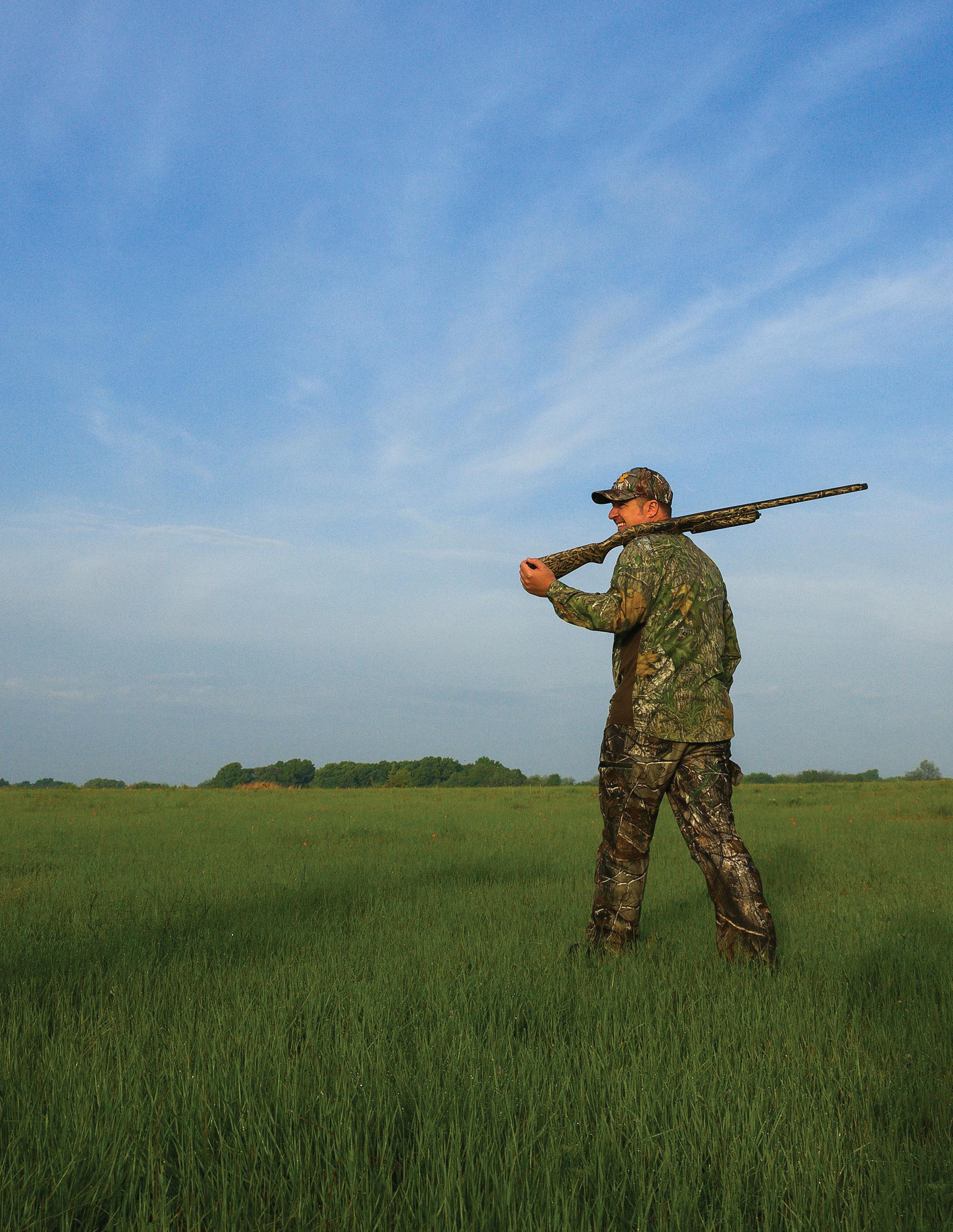
ACROSS THE RANCHING LANDSCAPE, hunting enterprises are proving their added value in profitability, sustainability and meaningful land stewardship.
BY MADDY BEZNER
What if the land you manage could do more than just feed livestock? By integrating recreational hunting and fishing into their regenerative grazing operations, ranchers like Michael Vance, John Phelan and Jennifer Hernandez are building healthier land, stronger communities and more profitable bottom lines.
Michael Vance manages a regenerative ranching operation near Palestine, Texas, alongside his family, raising Red Angus cattle primarily for seedstock while also producing grass-fed beef. His philosophy is rooted in the idea that cattle management and wildlife conservation can and should work hand in hand, enhancing ecosystems to support thriving populations of deer, turkeys, quail, geese and other wildlife.
“We’ve been ‘regenerative’ for over a decade — since before it was cool,” Vance says. “For the past 15 years, we've really tried to operate as an ecosystem.”
For Vance, hunting is more than an extra profit stream. It’s a way to bring people back to the land and to reconnect them with something many have lost.
“The biggest issue in the entire world right now, in my opinion, is that people are not connected to dirt,” he says. “It's our responsibility as landowners and land managers to create those opportunities.”
Hosting hunters allows Vance to offer that opportunity firsthand. Visitors experience not only the abundance of wildlife but also the health of a landscape managed through regenerative management practices. Often, he’s found that these experiences make an impact.
“Usually, my hunters are the first ones that ask for our grass-fed beef,” he says. “They see how we’re operating and they're like, ‘We want beef off of this operation.’”
He encourages ranchers to think outside the box about offering hunting experiences, moving beyond traditional leases or outfitters.
“Even if a rancher hosts just two people a year, it’s an easy way to build valuable relationships without much effort,” he says. “It doesn’t have to be about trophies, but the experience.”
That firsthand exposure not only builds trust but can change perceptions.
“I've had people come in thinking you have to feed deer to have big horns,” he says. “But when they get here and see how we operate, they realize there's so much food naturally, they see more deer than ever.”
The benefits of Vance’s ecosystem-focused management stretch beyond just wildlife numbers. His grazing and cover-crop strategies have even improved the quality of the game itself.
Deer and other game wildlife benefit from the 2,000 acres of cover crops Michael Vance plants as part of his regenerative management.
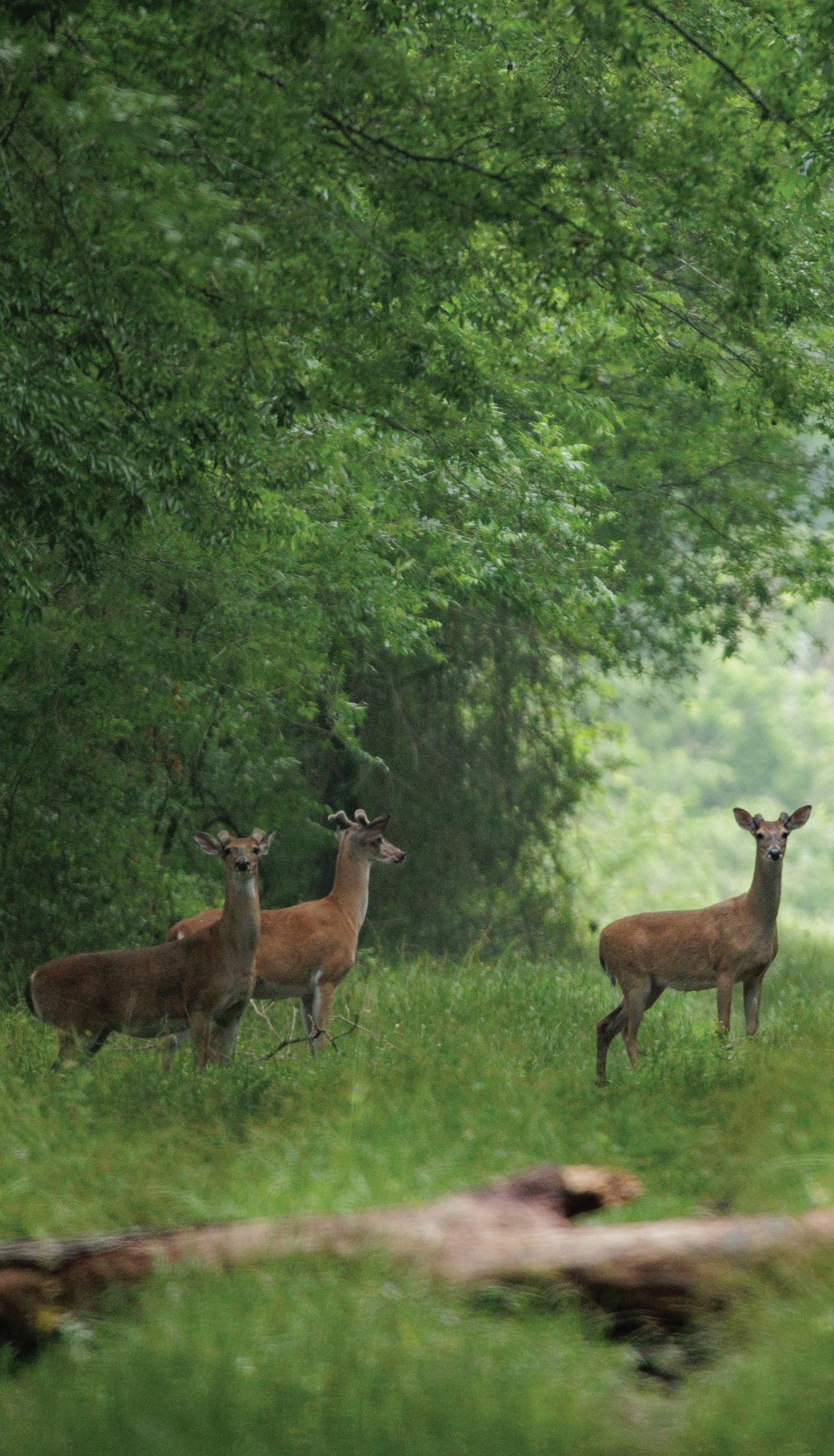
“We planted 2,000 acres of cover crops, essentially food plots, and we’re seeing better flavor in the wild pigs because they're grazing regenerative plants,” he says. “It’s a high-value protein without any extra inputs.”
As his operation’s reputation has grown, so too have the opportunities. Landowners nearby have taken notice, opening doors for Vance to expand the ranch’s grazing footprint.
“We have people calling us saying, ‘If you find property next to you, we’ll partner with you and let you graze it free because we realize you can manage our deer,’” he says. “There’s so much value ranchers may be missing.”
For Vance, it’s about creating lasting impact.
“We need to build relationships,” he says. “Our hunting needs to bear fruit, again, not just in trophy size, but in healthier ecosystems, better experiences and stronger connections.”
Through every hunt and handshake, Vance is helping bridge the gap between people and the land, leaving both better than he found them.

John Phelan’s ranching journey began with his father’s purchase of land near a wildlife refuge, a decision that would shape Phelan’s view of land management for decades to come. Over the years, Phelan’s operation, outside Mountain Park, Oklahoma, grew to include raising cattle and sheep as well as offering elk hunting, demonstrating how traditional ranching practices and recreational enterprises can work together.
Initially, offering hunting access wasn’t part of his original business strategy. It began as a casual opportunity that presented itself naturally.
“I had some folks interested in paying to hunt,” Phelan says. “It seemed like a good idea to let people hunt who were willing to pay. It helped us know who was out there and turned into a real business opportunity.”
ation, he can move livestock in ways that benefit both the health of his land and the success of his hunts.
“You can stay out of the hot spots where the hunting is best,” he says. “On my lease place, I can completely destock during hunting season to give hunters the best experience.”
The financial impact has been significant. His hunting enterprise provides an additional income stream that supports the ranch’s long-term stability. Beyond the revenue, it has simplified property management and eased day-today operations.
“ It seemed like a good idea to let people hunt who were willing to pay. It helped us know who was out there and turned into a real business opportunity.”
—JOHN PHELAN
What started as a side venture quickly developed into a successful enterprise. Phelan transitioned from simple, informal leases to fully guided elk hunts, managed by a dedicated guide, expanding his income potential without adding extra work to his plate.
One of the biggest advantages, Phelan says, has been the ability to manage his grazing and wildlife habitats strategically. By integrating adaptive grazing with his hunting oper-
“It's made all the difference as far as being able to stay in business and take care of my countryside,” he says.
“Having another source of income sure helps.”
Still, Phelan emphasizes that simplicity has been key to making it work.
“We learned we're not necessarily interested in a bed-and-breakfasttype hunting operation. Keeping it simple has worked for us.”
By aligning his grazing management with wildlife needs, Phelan has created a more resilient and profitable ranch. For those considering a similar path, his advice is straightforward: “Don’t spend much on infrastructure initially. Electric fencing technology is affordable and easy to move. Just start small, allow grass recovery and grow into it gradually.”
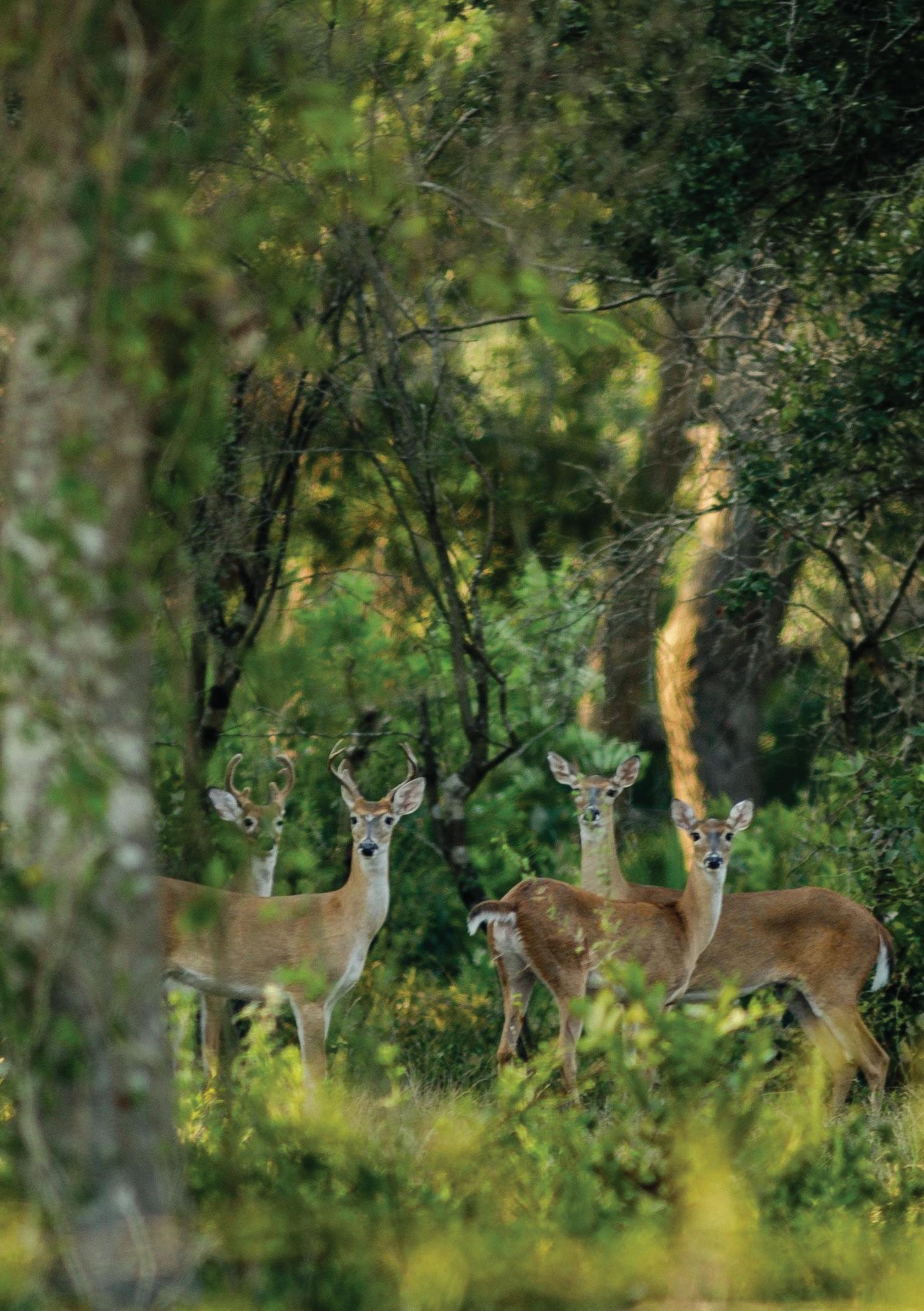
White-tailed

At 3J Farms OK in Blanchard, Oklahoma, adaptability has been part of the story from the beginning. Managed today by Jennifer Hernandez and her husband, Luis, the farm has evolved through the years. It began as a dairy in 1977 before the Hernandezes expanded into stockers and a cow-calf operation, with adaptive grazing, greenhouse gardening and Airbnb agritourism.
Most recently, the family added hunting and fishing opportunities, finding yet another way to diversify without stretching their resources too thin. The decision to offer hunting access came from a growing need to better manage guest activity on the property.
"People want to fish all the time, especially during the greenhouse season," Hernandez says. "I wanted to allow people to fish, but we needed something to help manage that.”
She first heard about LandTrust, a service that connects landowners with outdoor enthusiasts, while listening to a podcast.
“I learned about LandTrust, and since we'd already had a great experience with Airbnb, I thought we'd give it a try,” she says. The partnership turned out to be a smart move, giving the Hernandez family their time back while LandTrust handles most of the logistics for visitor booking, making the process simple.
For Hernandez, integrating hunting into the operation made sense because it naturally complemented the way they already managed the land.
“ Hunting is a missed opportunity for many farmers and ranchers. It has minimal added inputs and is very profitable.”
—JENNIFER HERNANDEZ
"Managing resources — specifically your grass and soil health — tends to naturally create good wildlife habitat," she says. Beyond land management benefits, adding hunting access made solid business sense.
"Hunting is a missed opportunity for many farmers and ranchers," she says. "It has minimal added inputs and is very profitable."
The returns came quickly, Hernandez recalls, pointing out a practical example.
“We have deer hunters booked for this fall, two hunters over six days, and that’s going to bring in about $2,100,” she says. Similarly, she says, duck hunting is relatively easy to manage and can generate substantial income.
Their adaptive cattle management practices also help keep livestock and hunters safely separated, allowing both enterprises to operate without conflict.
"Because of the way we manage cattle, we can always ensure that hunters have their space and cattle have theirs, even on the same property."
Her husband’s experience with and observations during adaptive grazing have played a major role in making sure guests have successful outings.
“Luis knows exactly where the deer go,” she says. “He’s not hunting them, but he knows their patterns. That’s a huge advantage for our guests.”
Looking ahead, Hernandez sees opportunities to expand the enterprise but remains focused on keeping things simple at the start.
“Hunters appreciate blinds or stands, and as the enterprise grows, we’ll invest in those,” she says. “But we don’t need to initially. It’s profitable from the start.”
Read more about the Hernandez farm on page 26.
Vance, Phelan and Hernandez may each have unique approaches to their hunting enterprises, but their goals converge around a simple idea: sharing the land with hunters strengthens both the ranch and the community.
Hunting enterprises, whether focused on profit, education or both, help ranchers maximize the value of their land — not just financially but socially and ecologically. Integrating hunting into ranching isn't just diversification, it contributes to responsible stewardship and connections with the public.
As Vance puts it, “When someone criticizes cattle ranching's environmental impact, I want someone else there saying, ‘Wait, I've seen regenerative ranching firsthand, and that's just not true.’ Ranchers can create these connections. Hunting provides that chance.”
1. Start simple. You don't need major infrastructure investment. Electric fencing and clear access points are enough to begin. Focus first on land management and guest expectations.
2. Match grazing to wildlife. Strategic, adaptive grazing naturally improves wildlife habitat. Rest key areas during hunting seasons to support healthy populations.
3. Pick the right model. Direct leases, guided hunts or platforms like LandTrust each offer different levels of control and effort. Choose what fits your operation.
4. Grow smart. Start small and build amenities like blinds only as demand grows. Profitability often comes from keeping things simple.
5. Focus on relationships. Hosting hunters can build advocates for regenerative ranching and open new opportunities for land access and partnerships.

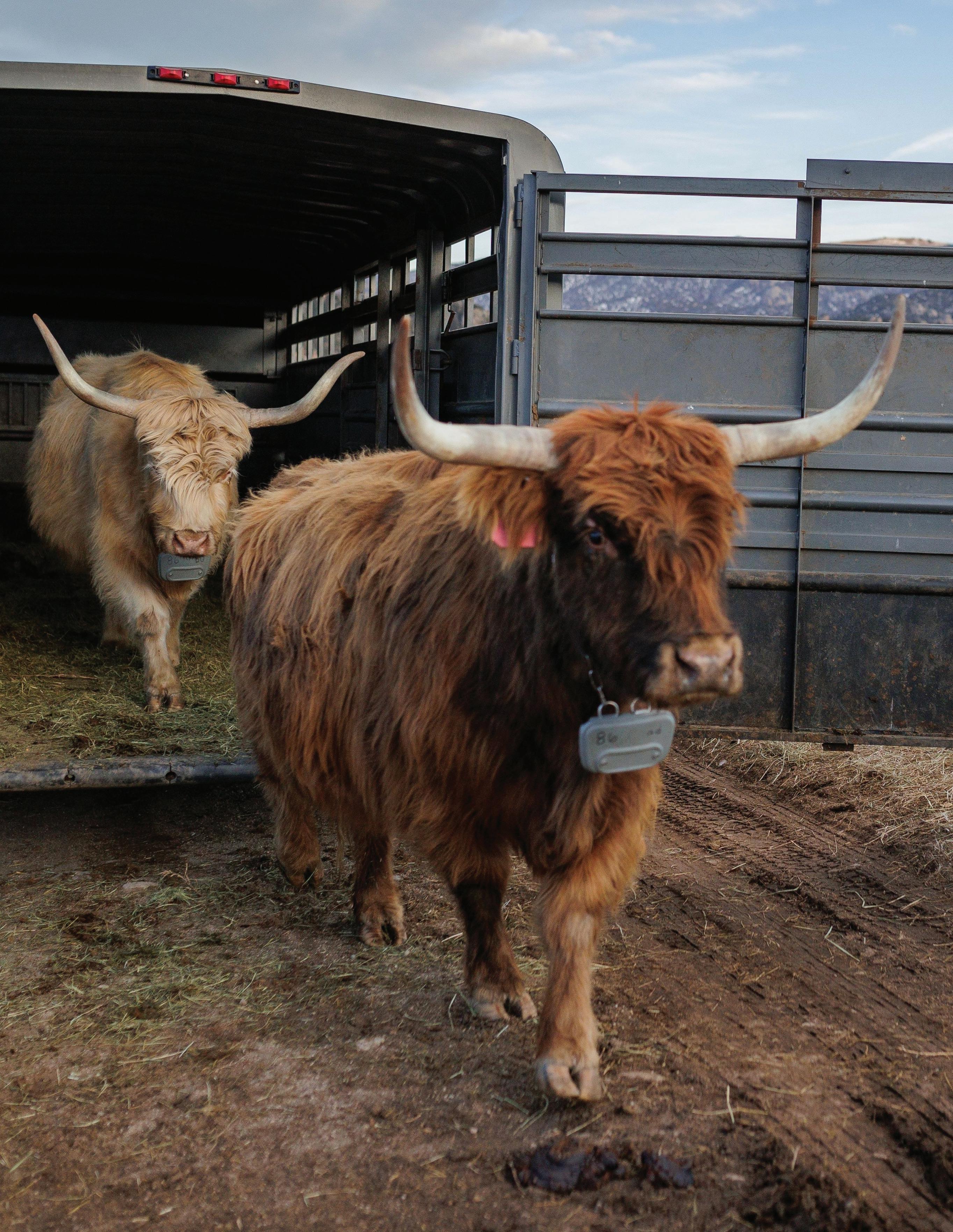

PROS, CONS AND WHAT TO KNOW before buying into virtual fencing as an alternative to traditional permanent or temporary fencing.
BY BURT RUTHERFORD
o barbed-wire fences and adaptive grazing work in harmony? Due to labor shortages along with the cost of cross-fencing with either permanent or electric fences, traditional fencing isn’t always an option, especially in big pastures.
Virtual fencing, while not the be-all and end-all, can be a solution. Essentially, virtual fencing is a system a rancher can use to program virtual barriers on a smartphone or computer to include or exclude certain areas of a pasture. Animals are fitted with collars that have GPS transceivers, tracking their location and generating sound cues and humane electrical impulses when animals come near the boundary.
Leo Barthelmess is an early adopter who tested such a system on the ranch he and his family run south of Malta, Montana, half on private land and half on Bureau of Land Management (BLM) leases. They run a commercial cow-calf outfit on 25,000 acres in an ecosystem that he’s told is the largest intact grassland in the world.
The region is home to the second longest migration corridor in the country for wildlife, especially antelope, and is the summer home to around a dozen prairie bird species facing potential endangered species listings.
“There’s a lot of conservation interest here,” he says, “and nobody wants more infrastructure out here.”
Barthelmess, through the Ranchers Stewardship Alliance (www.ranchstewards.org), received a grant to discover if virtual fencing is a viable alternative to traditional fencing. In November 2019, he collared a herd of dry, pregnant cows grazing winter pasture.

Turns out that virtual fencing was indeed a viable alternative, allowing him to change adaptive grazing paddocks virtually, protect riparian areas and use animal impact to help restore native forages.
Barthelmess’ ranch has 40 permanent-fence pastures on both private and BLM land, the largest of which is 4,000 acres. The ranch’s 40 sections have 60 permanent water sources most years. And access to water is what determines how cattle graze a pasture. He and his crew subdivided the largest pastures based on water availability and used virtual fencing to move cattle. His goal was to increase stock density by applying traditional pasture rotation with a more targeted, high density grazing program.
“ Typically, there's an audio stimulus when the animal comes close to a perimeter, and then there is an electric stimulus to encourage the animal to stay away from the barrier.”
—ROBIN WHITE
Higher density grazing means cattle are moved more frequently between smaller areas, and each grazed pasture unit has a longer rest period.
“We just move from water source to water source with the virtual fence,” he says. On BLM ground, he can keep cattle away from streams, riparian areas and other places the public likes to use.
Much of the rangeland in northeast Montana was tilled during the homestead era and has since supported non-native plants such as crested wheatgrass.
“We have been using virtual fencing to target those non-native grass areas within the big pastures,” Barthelmess says.
Long term, it will help the land return to native grasses and forbs. In the meantime, “It’s allowed us to freshen up the nutrition and palatability of the grass, because we’re knocking a bunch of that decadent material down to the ground to feed the soil.”
However, the technology is new enough that questions remain, says Robin White, associate professor and associate director of the Center for Advanced Innovation in Agriculture at Virginia Tech.
“These technologies typically rely on GPS collars on animals, and they work a lot like an electric dog fence,” she says. “Typically, there’s an audio stimulus when the animal comes close to a perimeter, and then there is an electric stimulus to encourage the animal to stay away from the barrier.”
The collars allow a beef producer to track the location of animals in near real time through web- and phonebased apps.
“Some of the things we don’t know is how often you can move the boundaries. Is the animal really responding to the visual or the auditory stimulus, or have they learned that that part of the field is where they get shocked and they don’t want to go over there?”
There are a lot of reasons that virtual fencing might make sense. Mike Williams has one very compelling reason. He leases a 12,000-acre ranch in the
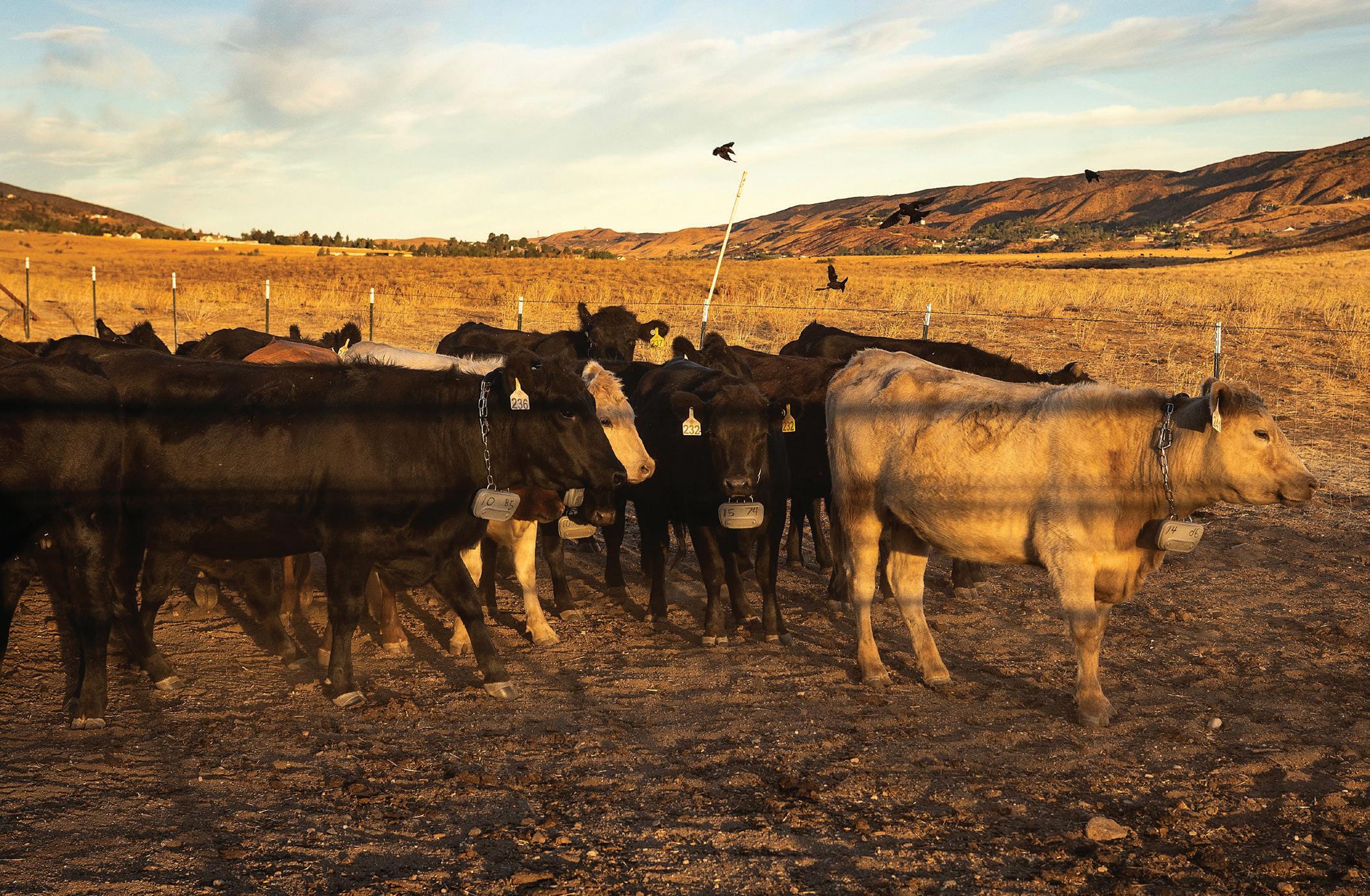
mountains northeast of Los Angeles. One of the lease stipulations is that there be no cross fences.
He herded his cattle when he first leased the ranch, keeping them in a bunch and moving them around every two or three days. While it worked, it was pretty much a full-time job, and Williams runs the ranch mostly by himself.
“When you get sidetracked, the cows get spread out, and it’s a job getting them back together again. So, I saw virtual fences as a way of maybe reducing the amount of area I had to go to when I did put them back together,” he says.
“It’s been so successful that I don’t spend nearly as much time with herding as I do relying on the virtual fence. Although I still use herding when I want a specific herd impact in specific areas, more concentrated than what the virtual fence is really designed to do.”
Beyond that, Williams says while cattle can be influenced by the virtual fence, they’re not necessarily confined by it.
“Some cows learn how to beat it,” he says. “It’s not something you’d want to use next to a highway, for example.” In addition, battery life of the collars is something to keep in mind.
However, he says the virtual fencing collars are effective in keeping track of the cattle in general.
“Just looking at the computer, you get an idea where they are at any given time, and you get an idea of the intensity that they’ve been in particular areas. I was surprised at some of the areas the cattle go to and some of the grazing patterns that the cattle were demonstrating.”
If you’re interested in grants or other help to add virtual fencing, contact your preferred local conservationist, says Martin Townsend, Ranchers Stewardship Alliance conservation director.
“NRCS is offering [cost-share] help through EQIP in most states. National and state grazing land coalitions, conservation districts and other entities may be as well.”
The challenge is that grants and similar support continue to change, according to Allison Burenheide with Vence, Merck Animal Health’s virtual fencing system.
“We’ve seen great success working with BLM, Forest Service and conser-
vation organizations such as Rocky Mountain Elk Foundation, Ducks Unlimited, Pheasants Forever and Sage Grouse Conservation,” she says.
• Available funding within your area.
• Needs within your area: post-burn grazing, wildlife migration/protection, invasive grass species, conservation focus, etc.
• Be prepared for what you’ll need for grants — most likely a grazing plan showing that you work with your range conservationist.
• Knowledge of topography and cell signal availability, which can impact effectiveness.

SPICE UP YOUR SUMMER GRILLING with this burger recipe that's sure to delight. Jennifer Hernandez of 3J Farms OK in Blanchard, Oklahoma, shares the favorite burger recipe of her late brother, Jesse. She makes it with her family's grass-fed beef.

Finely chopped red onion and the kick of spices rev up these tasty burgers, topped with grilled peppers, cheese and your favorite condiments.
{ 1 pound ground beef
4 SERVINGS ➤

{ 1/4 cup finely chopped red onion
{ 1 tablespoon parsley flakes
{ 1/2 teaspoon garlic salt
{ 1/2 teaspoon black pepper, ground
{ 1/4 teaspoon red pepper, ground
{ 2 medium red, orange or yellow bell peppers, seeded and quartered
{ Vegetable oil
{ 4 slices cheddar cheese
{ 4 hamburger buns
20-30 MINUTES
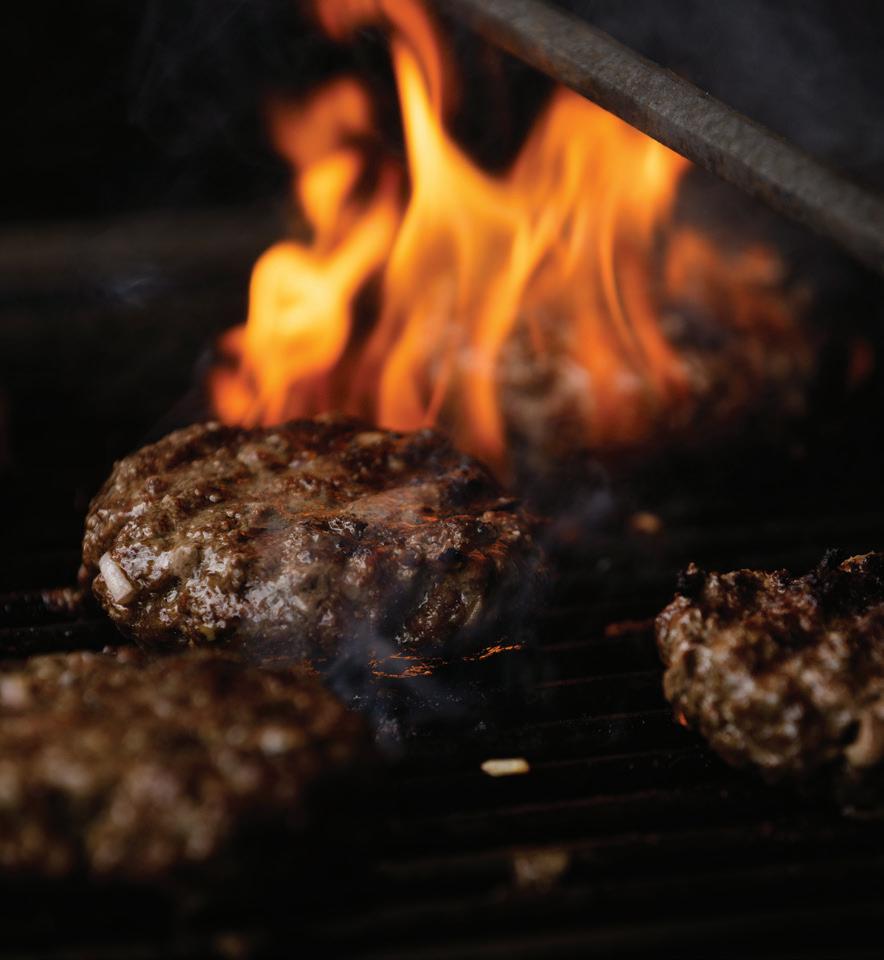
1. In a large bowl, mix ground beef, diced onion and seasonings together.
2. Shape the mixture into four patties.
3. Lightly brush bell peppers with oil.
4. Fire up your grill and bring it to medium heat.
5. Grill the patties and bell peppers 4-6 minutes per side, or until the burgers reach an internal temp of 160°F. Add a slice of cheese to each burger during the last minute of grilling. Toast your burger rolls open side down on the grill for about 30 seconds -- just long enough to give them a golden glow.
6. Slice the grilled bell peppers into thin strips. Stack your burgers on the toasted rolls, pile on the bell peppers and let your guests customize with their favorite condiments and toppings.

Rancher
Greg Spears from Graham, Texas, consults a well-worn map of his ranch, with pastures color-coded to aid in grazing planning and management.
A GRAZING MANAGEMENT PLAN serves as a roadmap for improving ranch productivity and helps producers efficiently allocate forage across their land. Grazing plans help producers anticipate and prepare for risks, take advantage of market opportunities, coordinate grazing with family schedules and ranch operations, and make efficient use of every acre of the ranch.
1. Draw or print a detailed map of pastures. Write out information on top of the image including pasture names, forage types, total acres and grazeable acres (accounting for brush, water bodies and infrastructure).
2. On a spreadsheet, record your pasture names or numbers, including information about the number of grazeable acres. Use rows across the top to record days and columns on the left to record pasture names and information. See the QR code below to use Noble’s grazing plan template.
3. On a separate document, write down all of your current livestock enterprises, including herd sizes, animal weights and animal unit calculations.
4. Make a note of important dates and events throughout the year that will impact livestock movement, including family or staff vacations, livestock weaning periods or maintenance projects.
5. Consider and write out your specific decision points for both risk management (like drought responses) and opportunity-taking (like favorable market conditions).
Example 1: If rainfall is below normal, measure forage and de-stock.
Example 2: If goat prices exceed $3.50 per pound, sell culls immediately.

Noble's Tips for Enhancing Your Grazing Management Plan:
{ Use color coding to track different livestock types (e.g., blue for cattle, green for goats).
{ Calculate "herd days per pasture" to determine how long livestock can graze each area.
{ Consider leader-follower grazing scenarios when managing multiple species of livestock.
{ Account for seasonal variations and infrastructure projects that might affect grazing patterns.
1. Review your plan regularly, and adapt it as needed. It should be a dynamic, living document that responds when the conditions on your ranch change.
2. Hold yourself accountable to reviewing your plan at least quarterly, in unison with calculating point-in-time available forage on your ranch to help you make datadriven decisions.

Scan this code with your smart phone to access our grazing plan template and a detailed video tutorial from Noble’s grazing management advisor, Josh Gaskamp.
BY ELISA JACKSON, Director of Development
On the rolling plains of southern Oklahoma, a vision took root in the mind of a man who was determined to restore what had been lost to drought and erosion in the 1930s and nurture what could grow. Lloyd Noble, an oil entrepreneur with a conservationist’s heart, believed that healthy soil is the cornerstone of a thriving nation. In 1945, that belief became a reality with the founding of what’s known today as Noble Research Institute, an institution that continues to transform agricultural landscapes and lives.
As we celebrate the Institute's 80th anniversary this year, we remember not just a milestone, but a mission. When Lloyd Noble established his science-based institute on Sept. 19, 1945, his goal was both simple and profound: to help farmers and ranchers rebuild their land and livelihoods in the wake of the Dust Bowl. Noble Research Institute endures today as a beacon of scientific discovery and practical support for farmers and ranchers.
Noble has grown beyond our founder’s imagination. Beginning as a regional conservation consulting and education effort, we’ve developed into one of the nation’s leading non-profit institutions for agricultural research and producer support. Noble continually adapts its focus to meet the evolving needs of land stewards, from 1945’s post-Dust Bowl recovery to today’s multi-faceted needs for climate-resilient farming and ranching methods.
In 2021, Noble sharpened its focus to better support livestock producers, embarking on a new initiative to become a leader in regenerative land management. Noble’s impact can be seen across hundreds of thousands of acres of restored land and in the lives of producers who have found new hope in regenerative practices. What’s more, Noble is giving farmers and ranchers a voice in a growing national
conversation about the future of food, farming and the environment.
As global challenges like soil erosion, water scarcity, loss of grazing land and weather instability grow more urgent, Noble’s mission is more important than ever. Through regenerative agriculture, Noble is proving that environmental health and agricultural profitability are not in conflict, but they are deeply interconnected.
As Noble Research Institute celebrates its 80th anniversary, we do so not by looking backward, but by preparing for the next 80 years of innovation and impact and beyond.
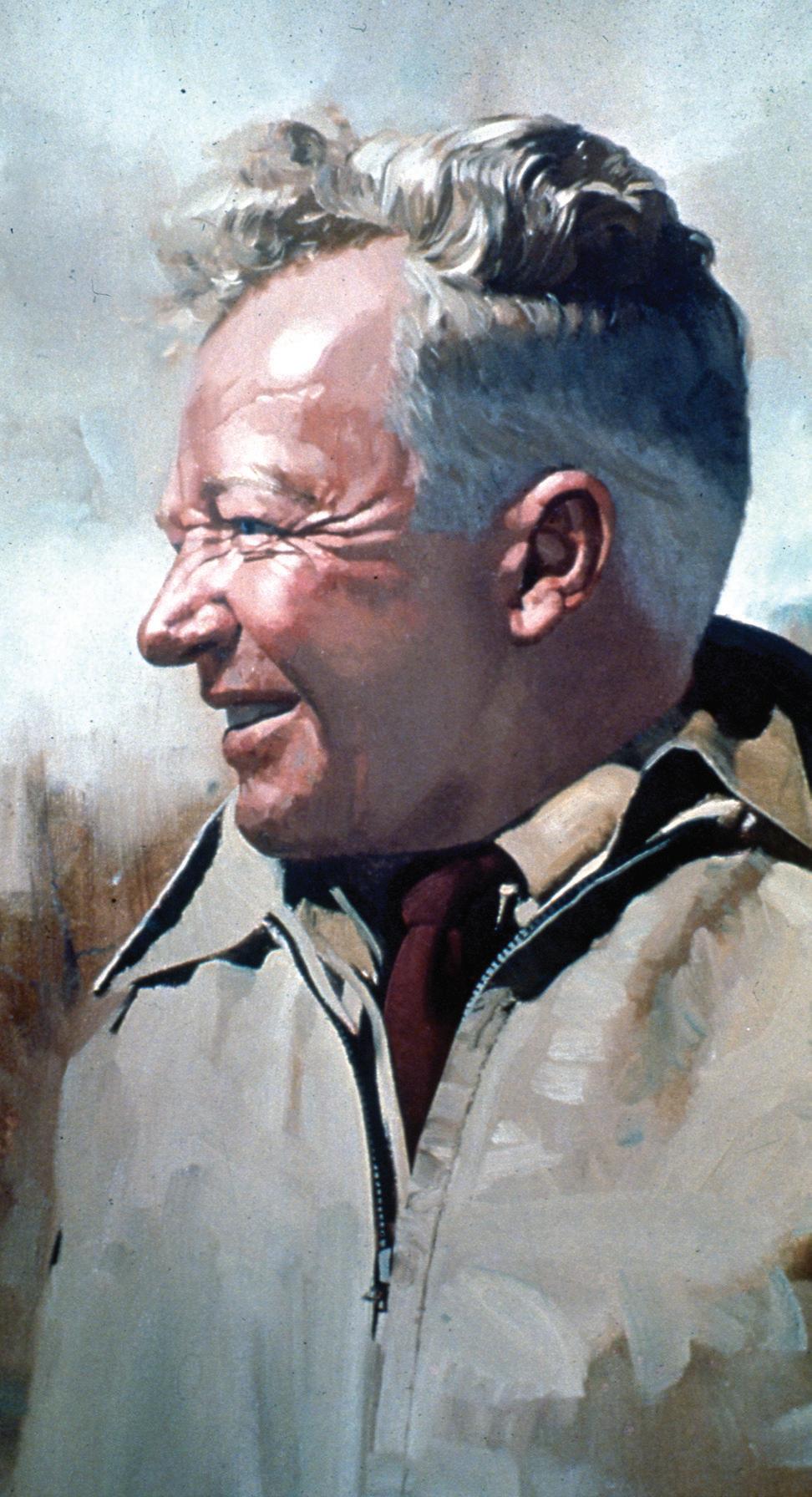
continues to shape the work of Noble Research Institute today.
The challenges facing agriculture today are formidable. But they are not insurmountable.
Currently, Noble is launching new educational initiatives aimed at accelerating the adoption of regenerative ranching practices nationwide. From field research on carbon sequestration to expanding digital tools that support decision-making in real time, Noble is leading the charge toward a more resilient future for America’s grazing lands and those who steward them.
Lloyd Noble saw something in the soil that others overlooked -- not just the potential for recovery, but the promise of renewal. He believed that if we take care of the land, it will take care of us in return. That idea
As we mark our 80th anniversary, we honor a movement started by Lloyd Noble himself. A movement rooted in care for our fellow man, driven by knowledge and sustained by a deep respect for the land and the people who depend on it.
As part of our celebration of this significant milestone, Noble Research Institute is hosting a special event, Roots & Revelry, to celebrate the land, our legacy and the people who make both flourish.
Please join us in Ardmore, Oklahoma, on Oct. 22, 2025, for Roots & Revelry, to commemorate our founder’s vision, the resilience of farmers and ranchers, and our deep-rooted commitment to land stewardship.
Cheers to 80 years!


Noble Research Institute, LLC
2510 Sam Noble Parkway Ardmore, OK 73401
